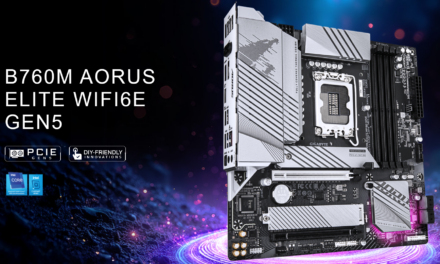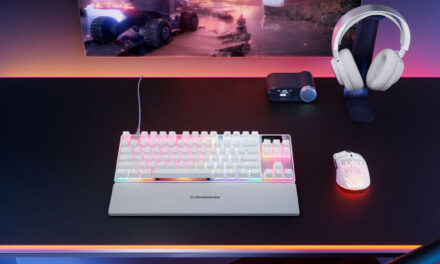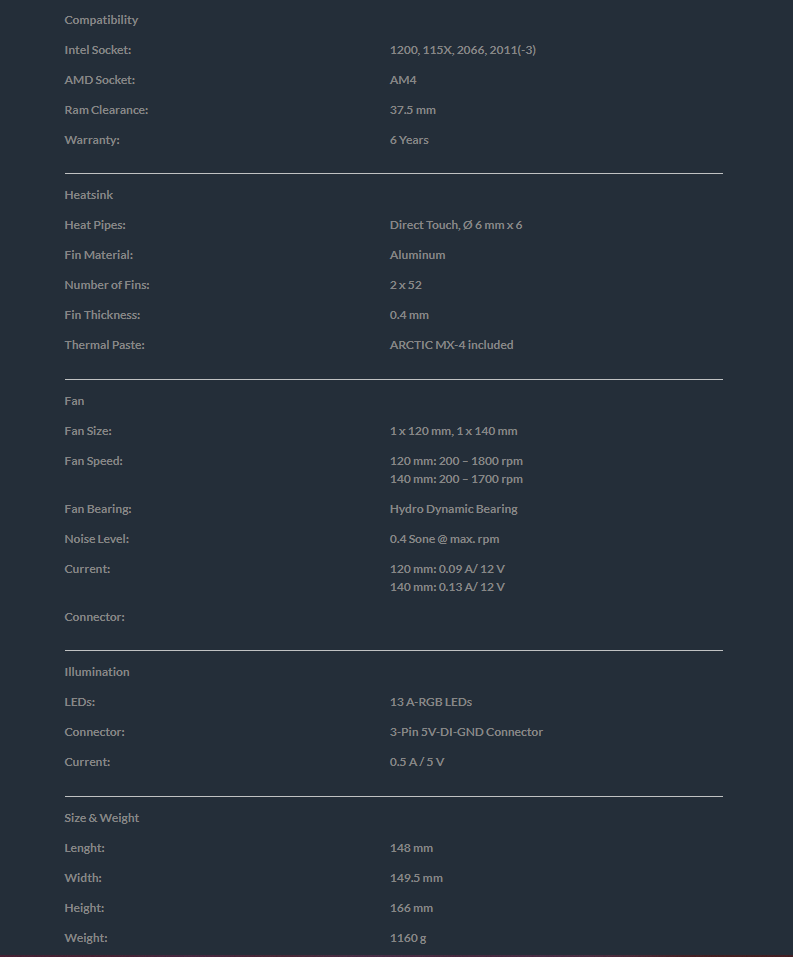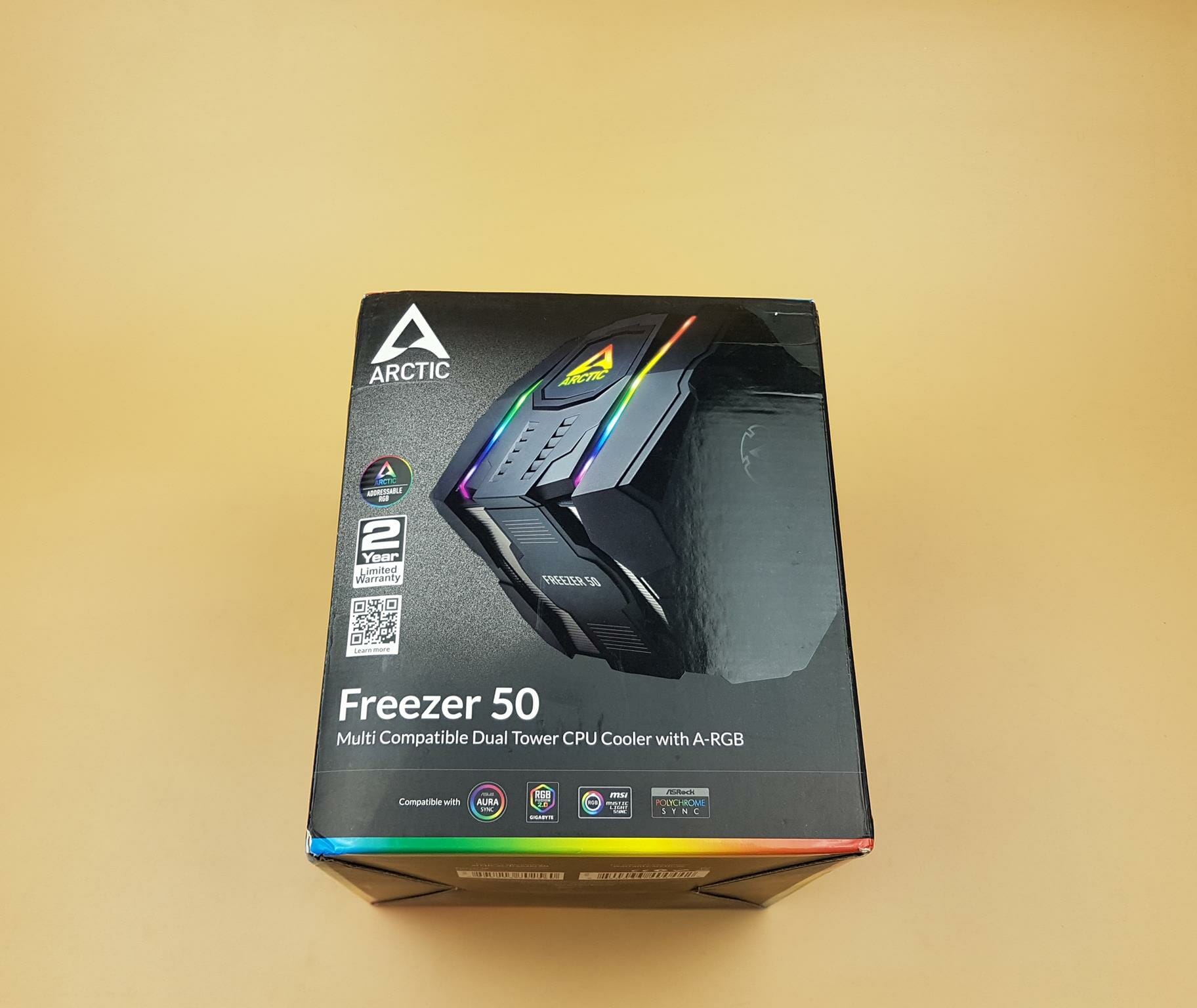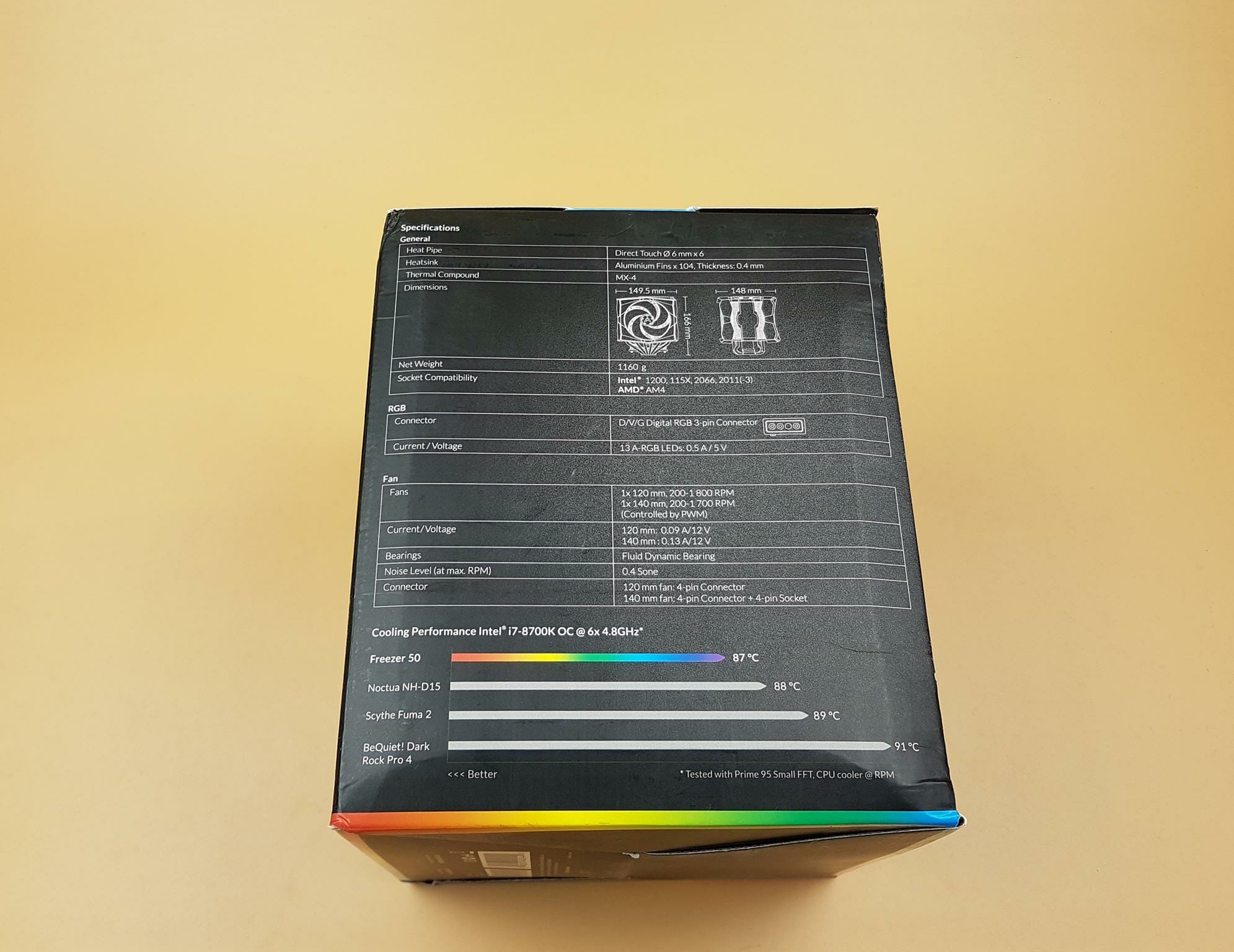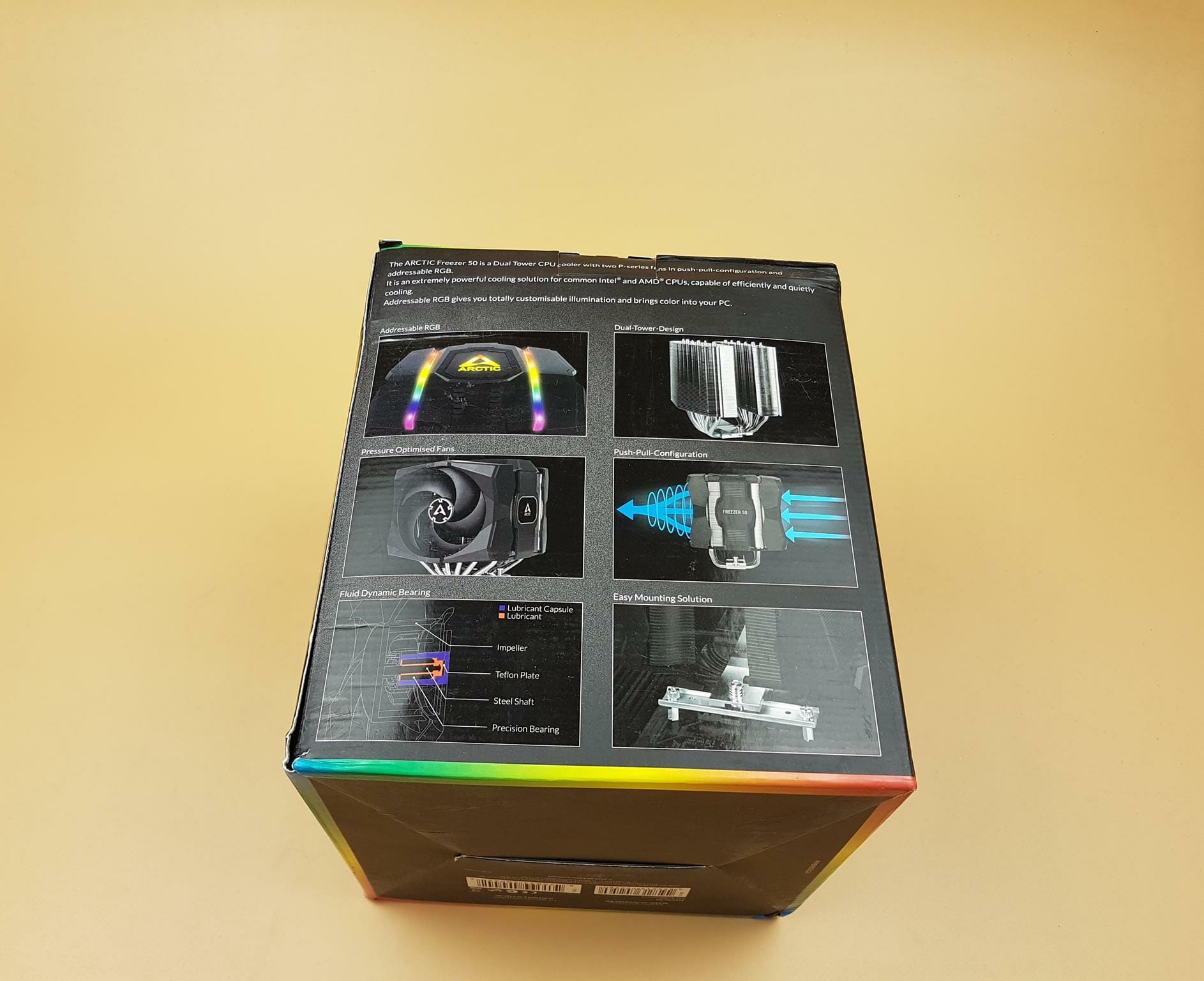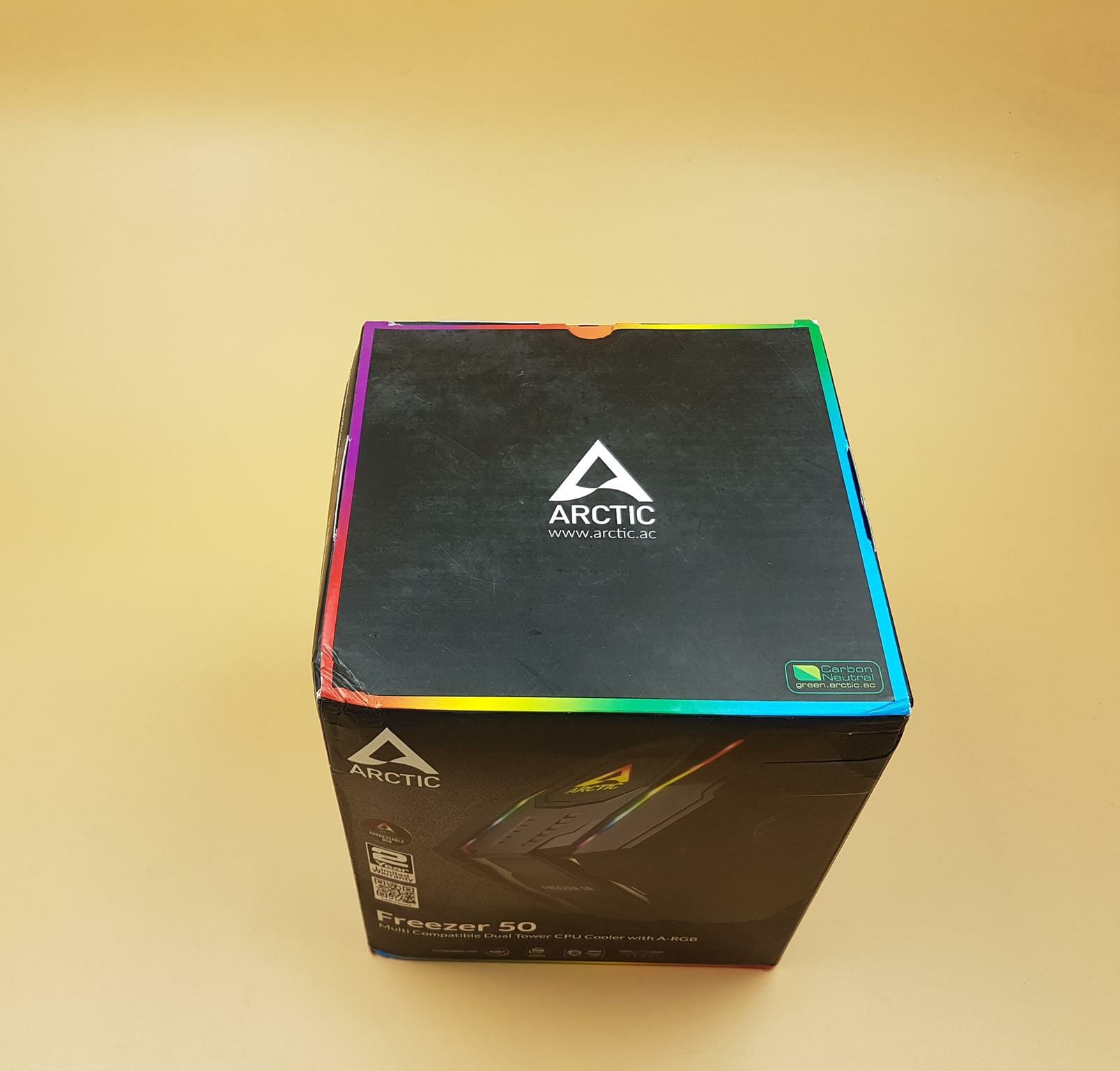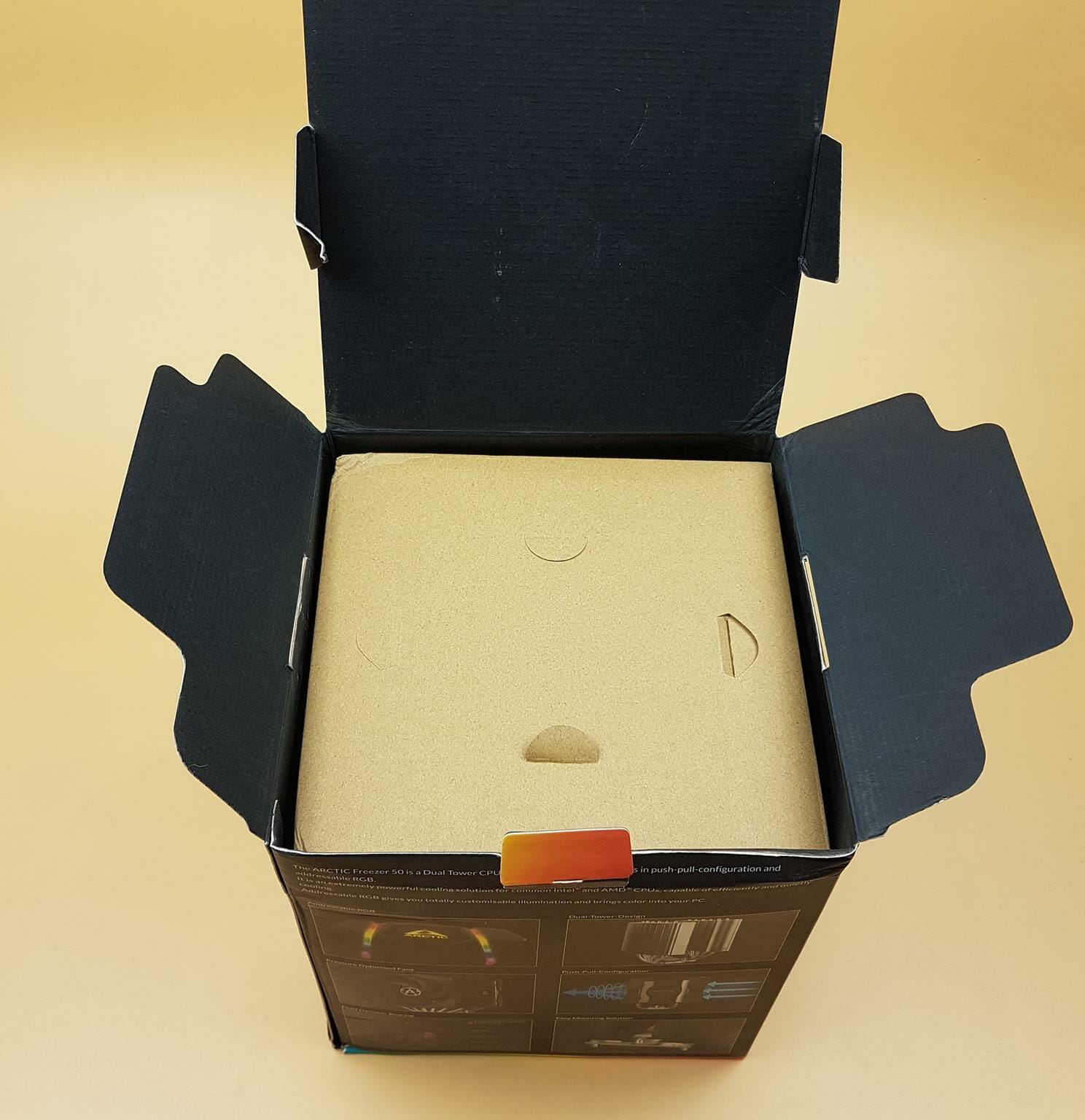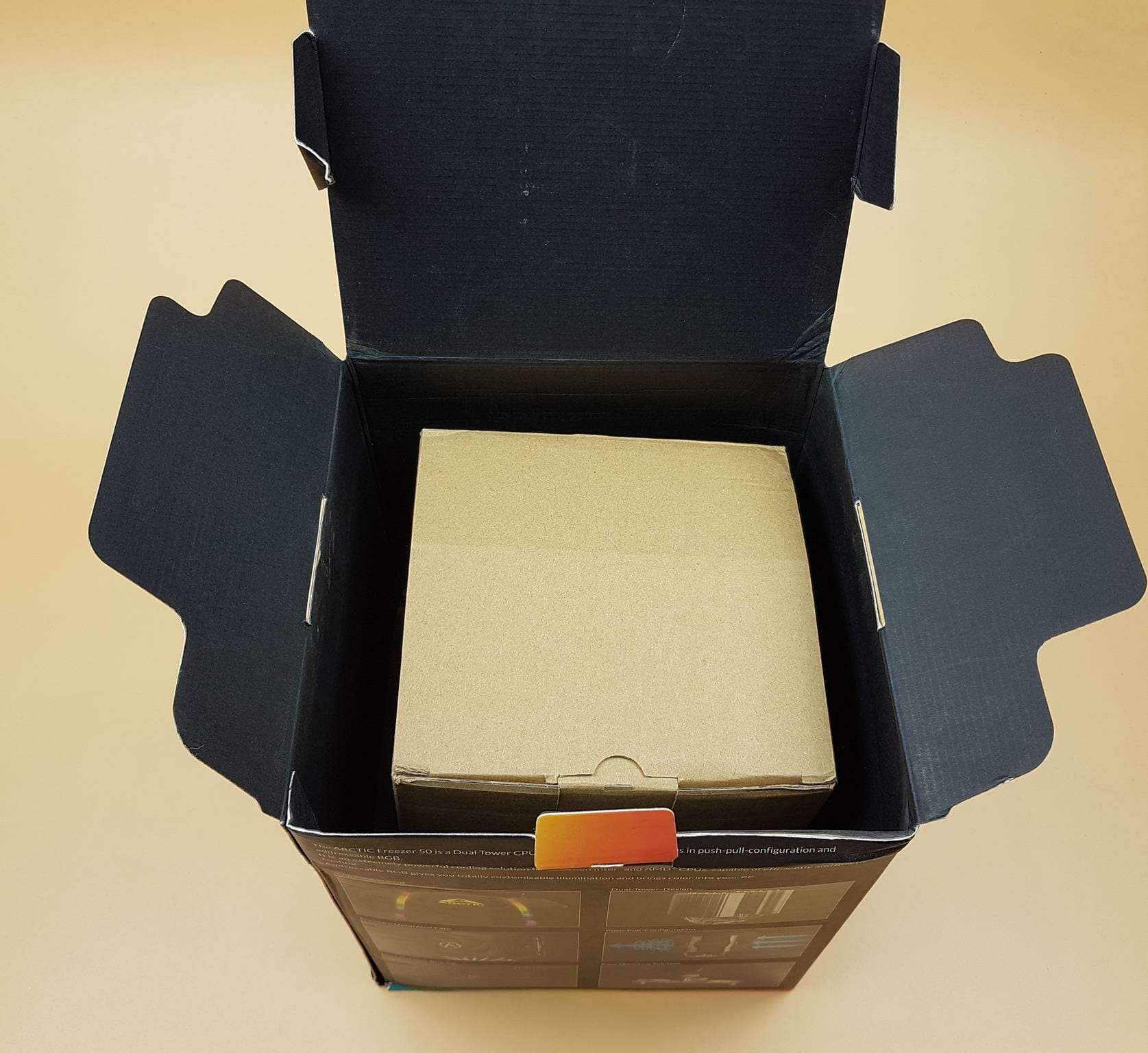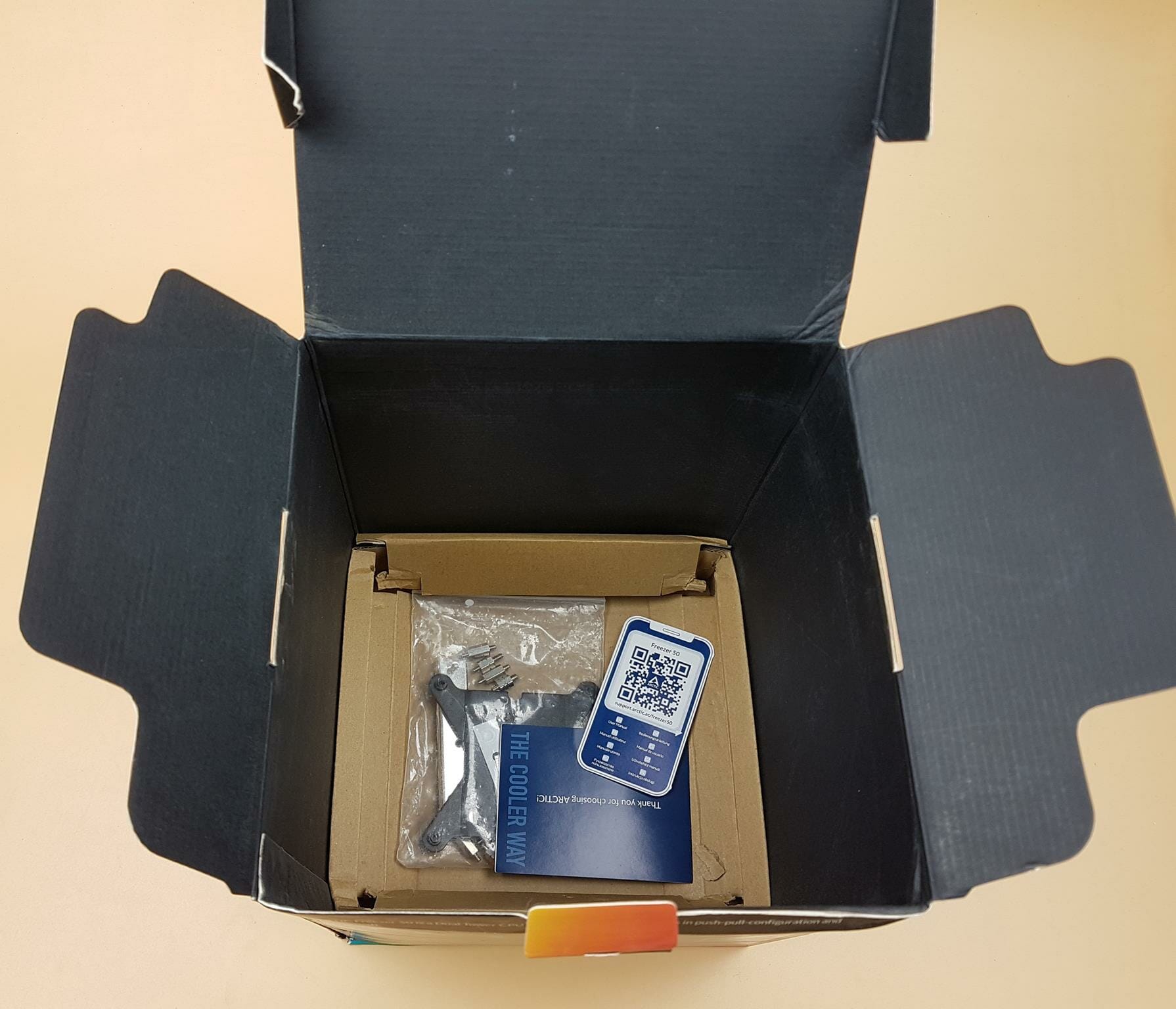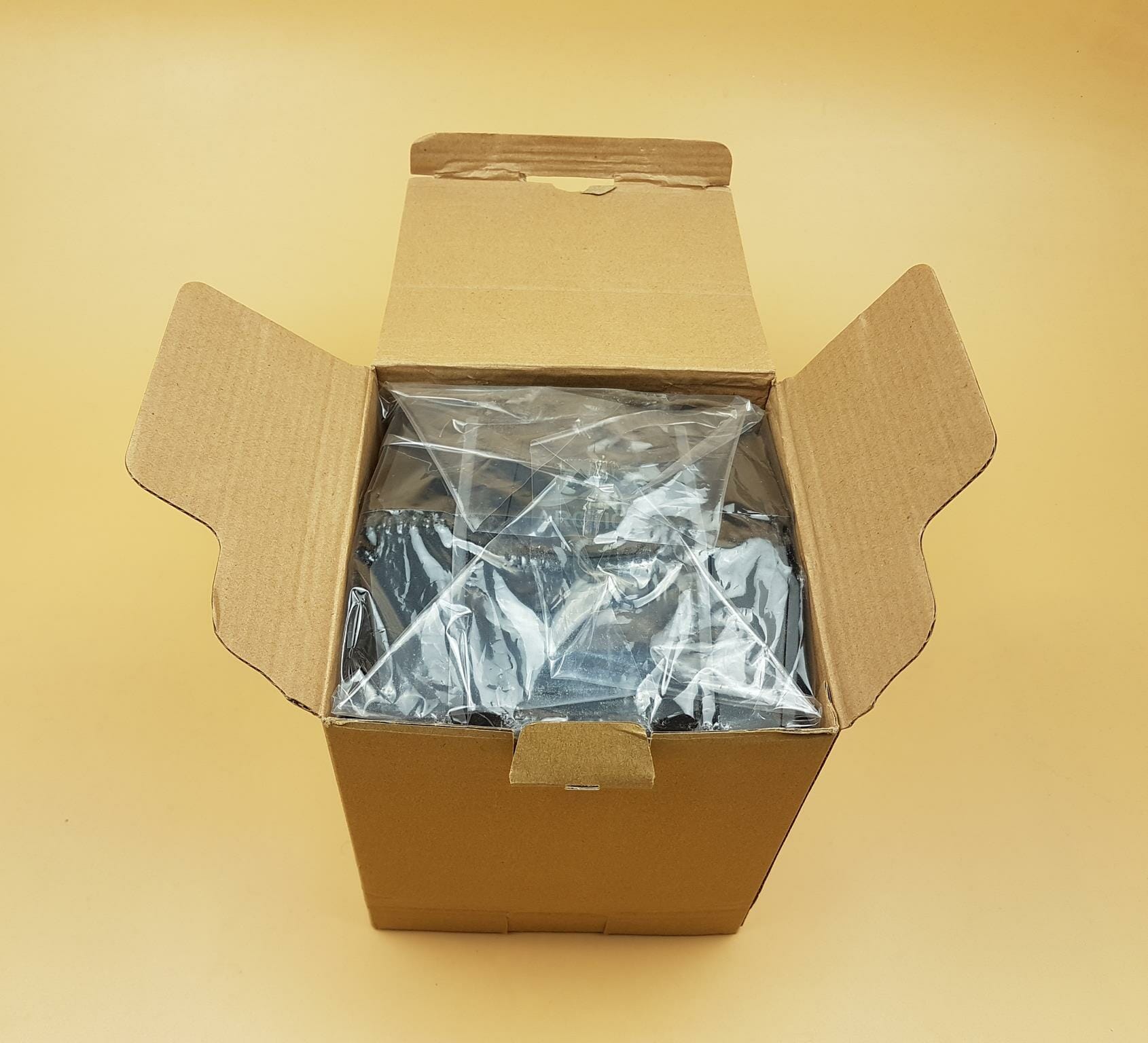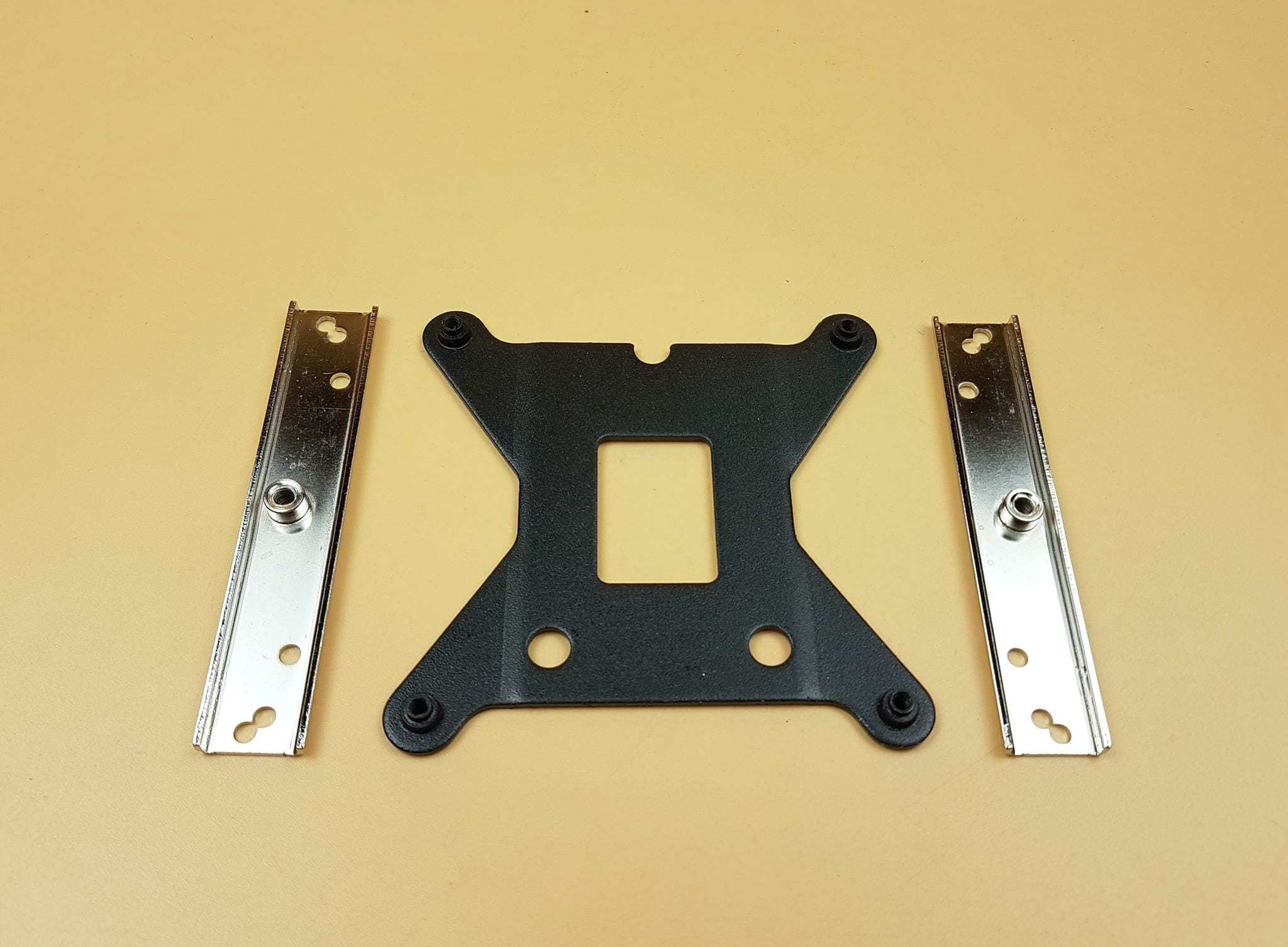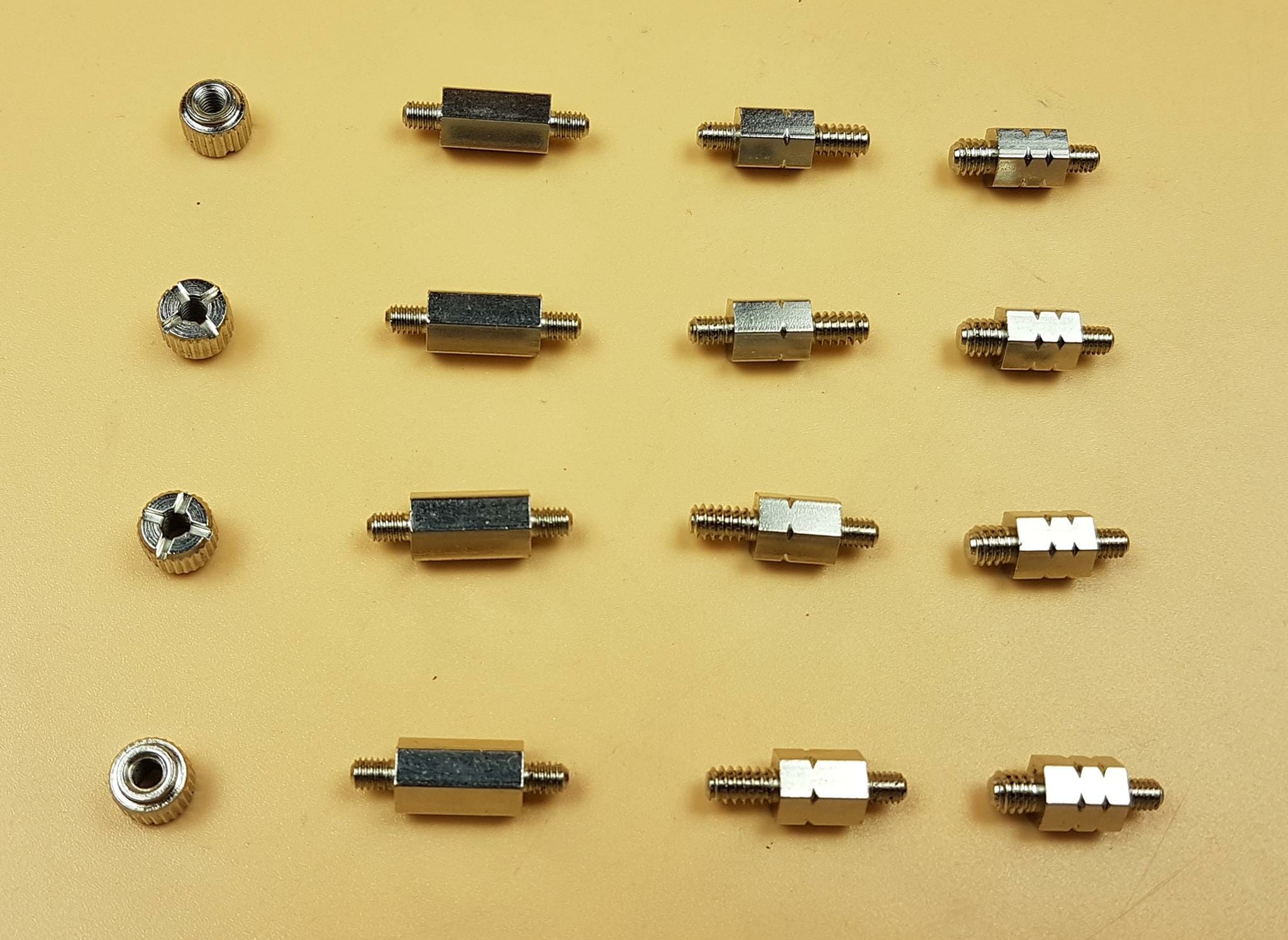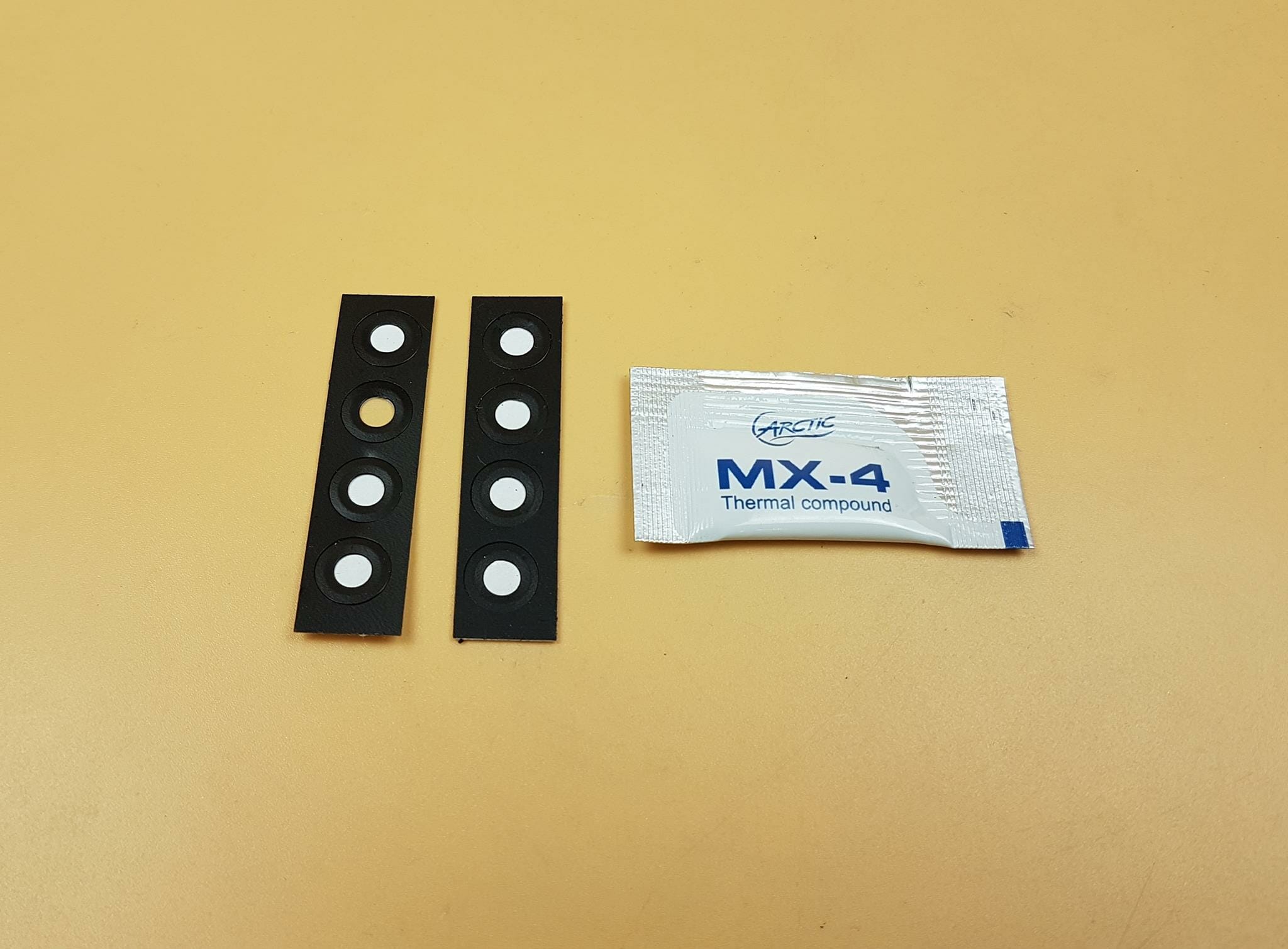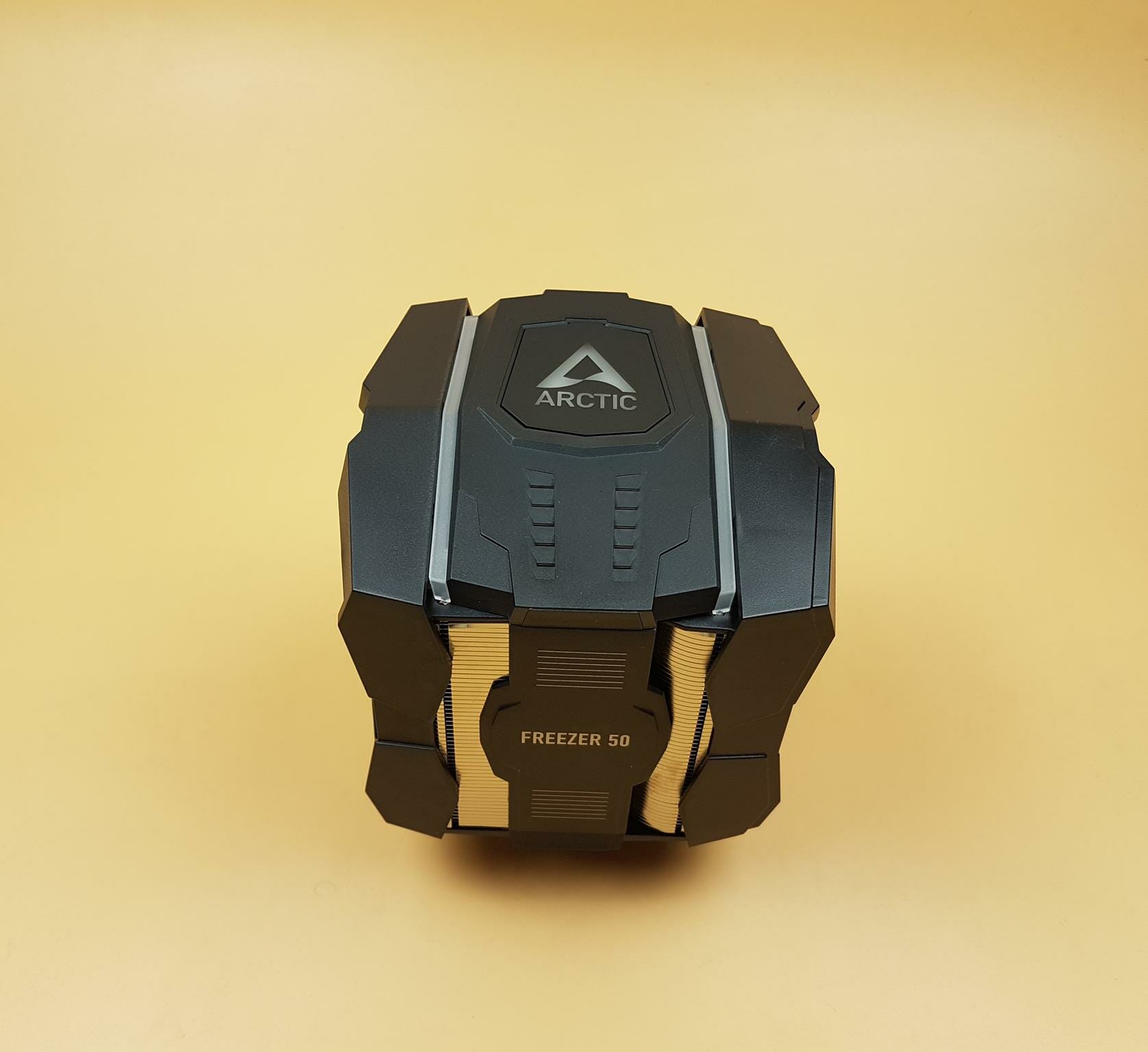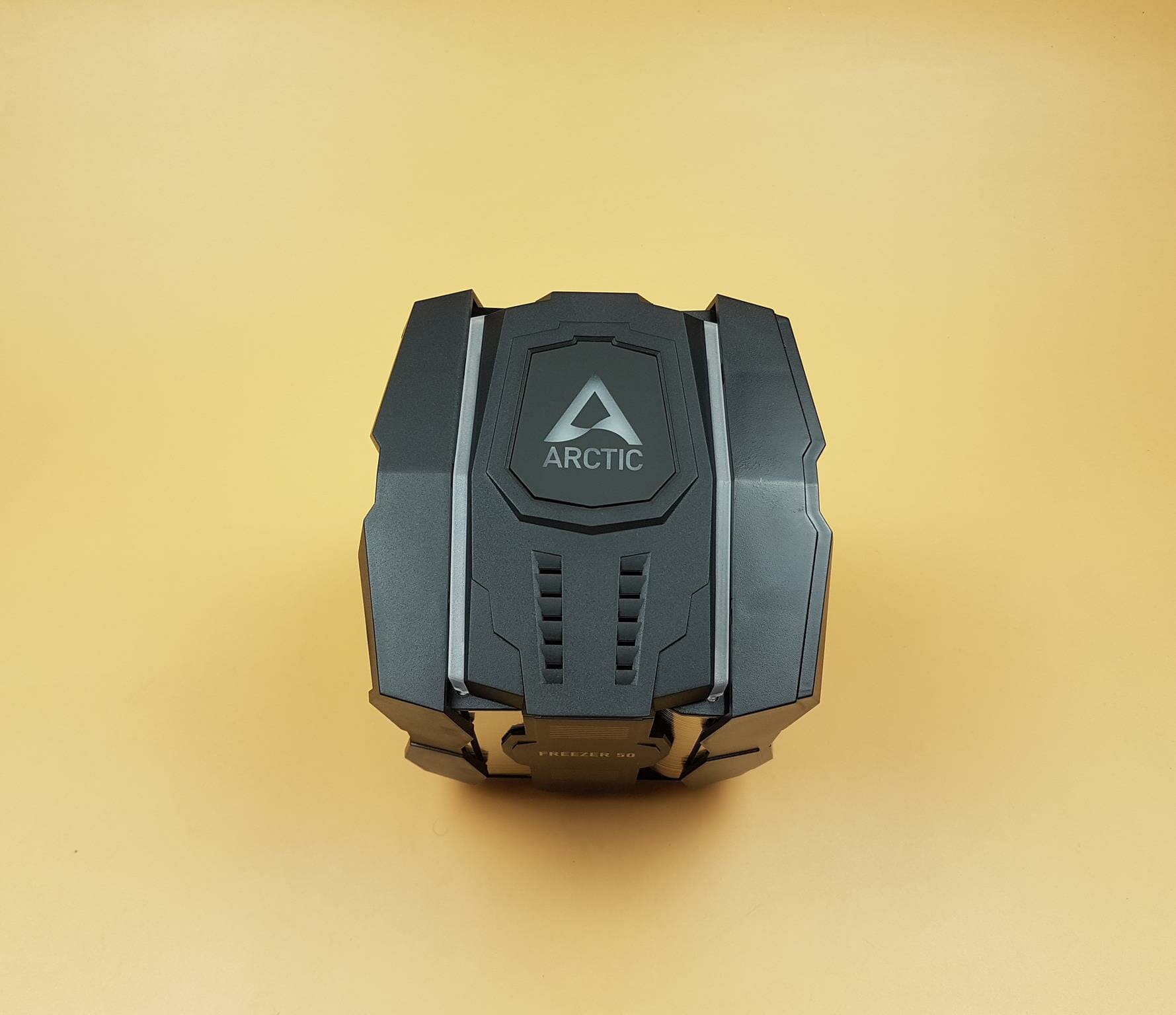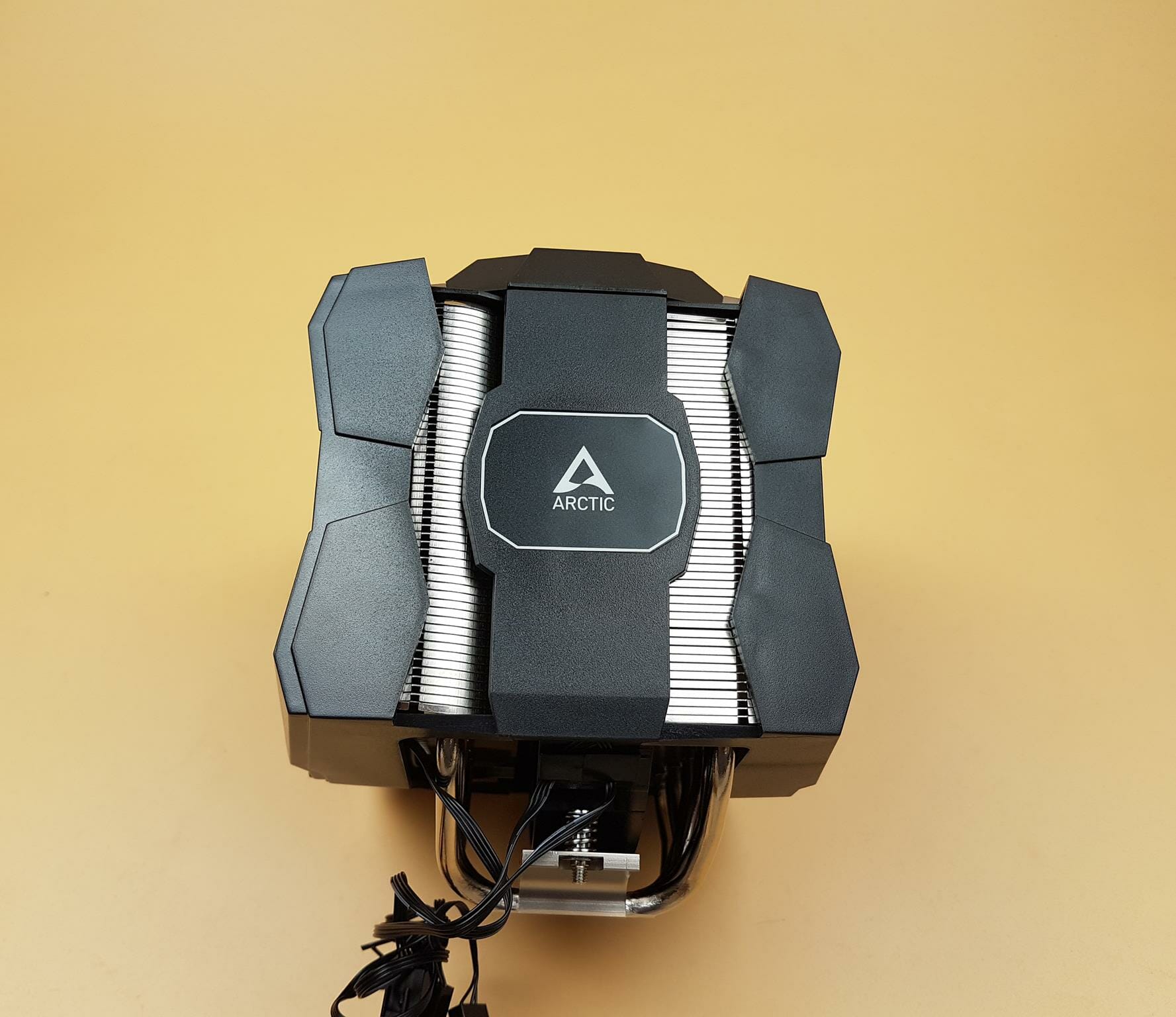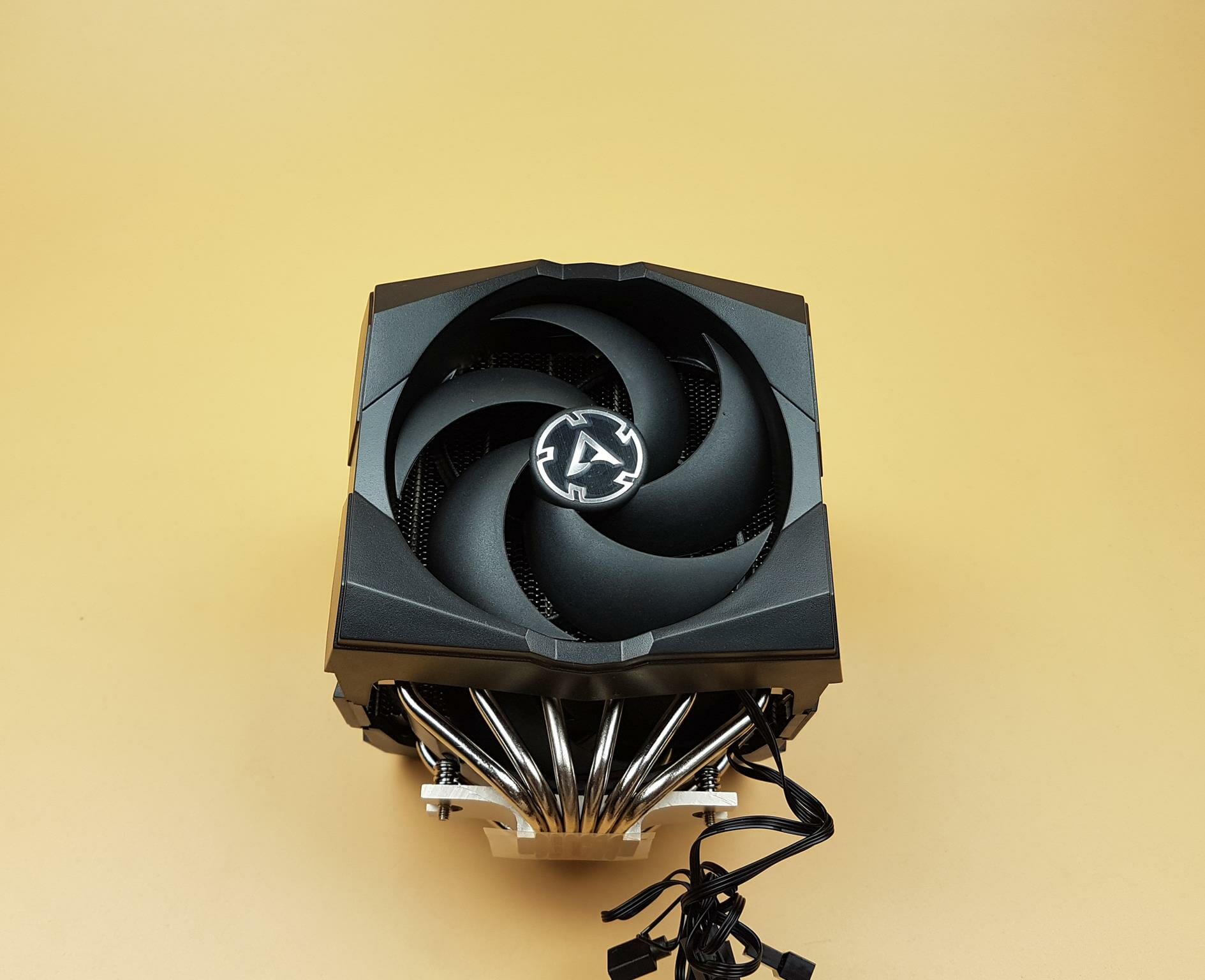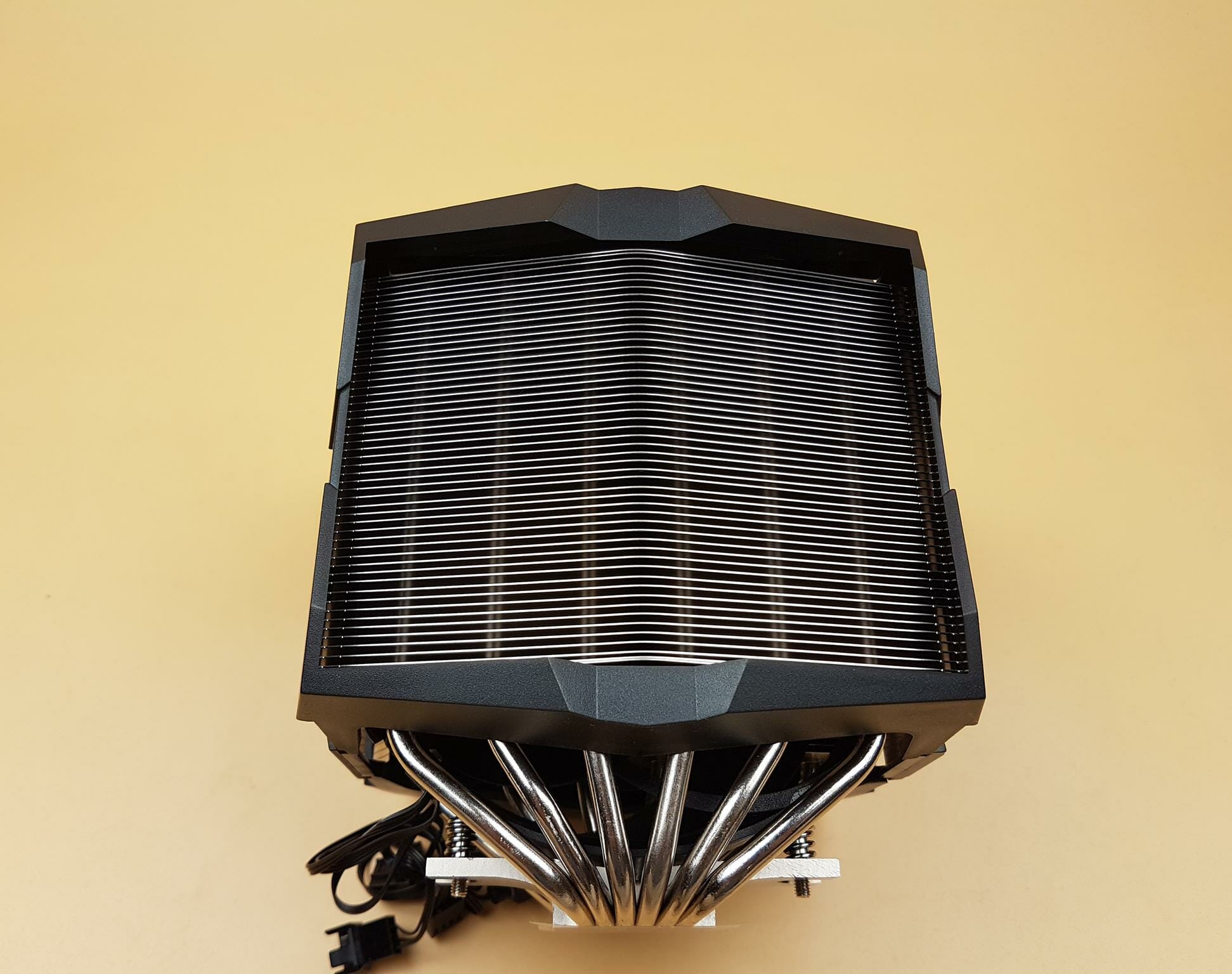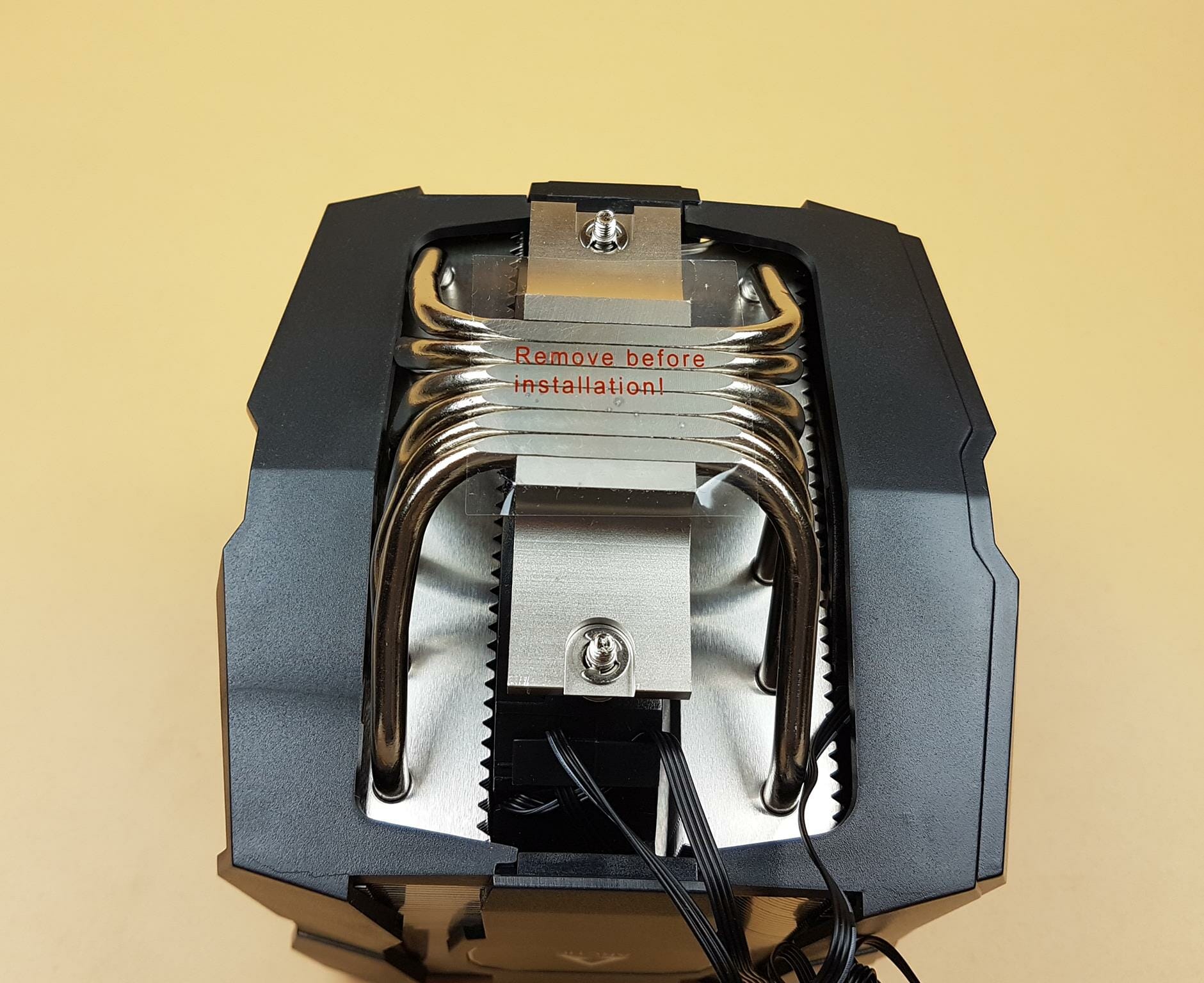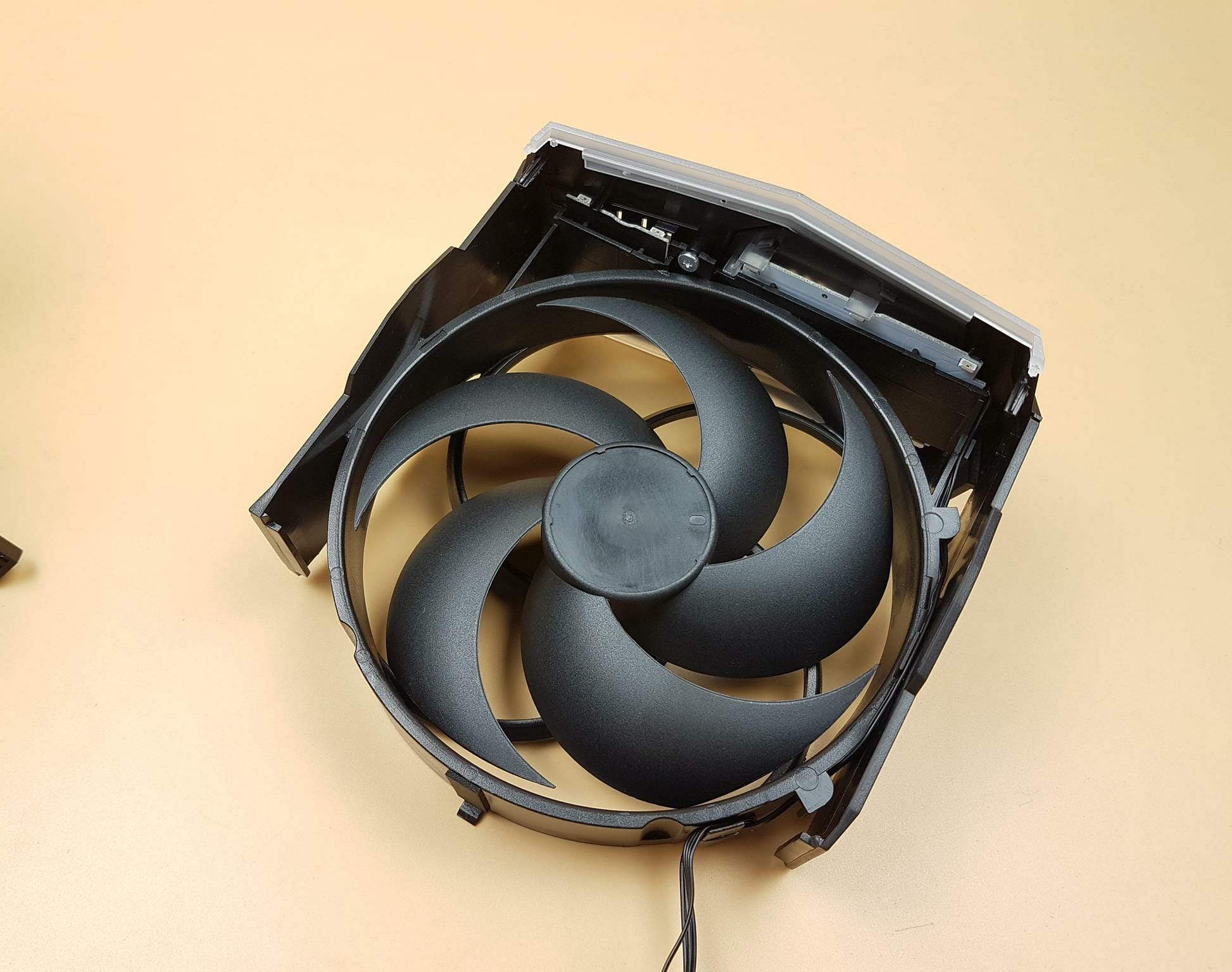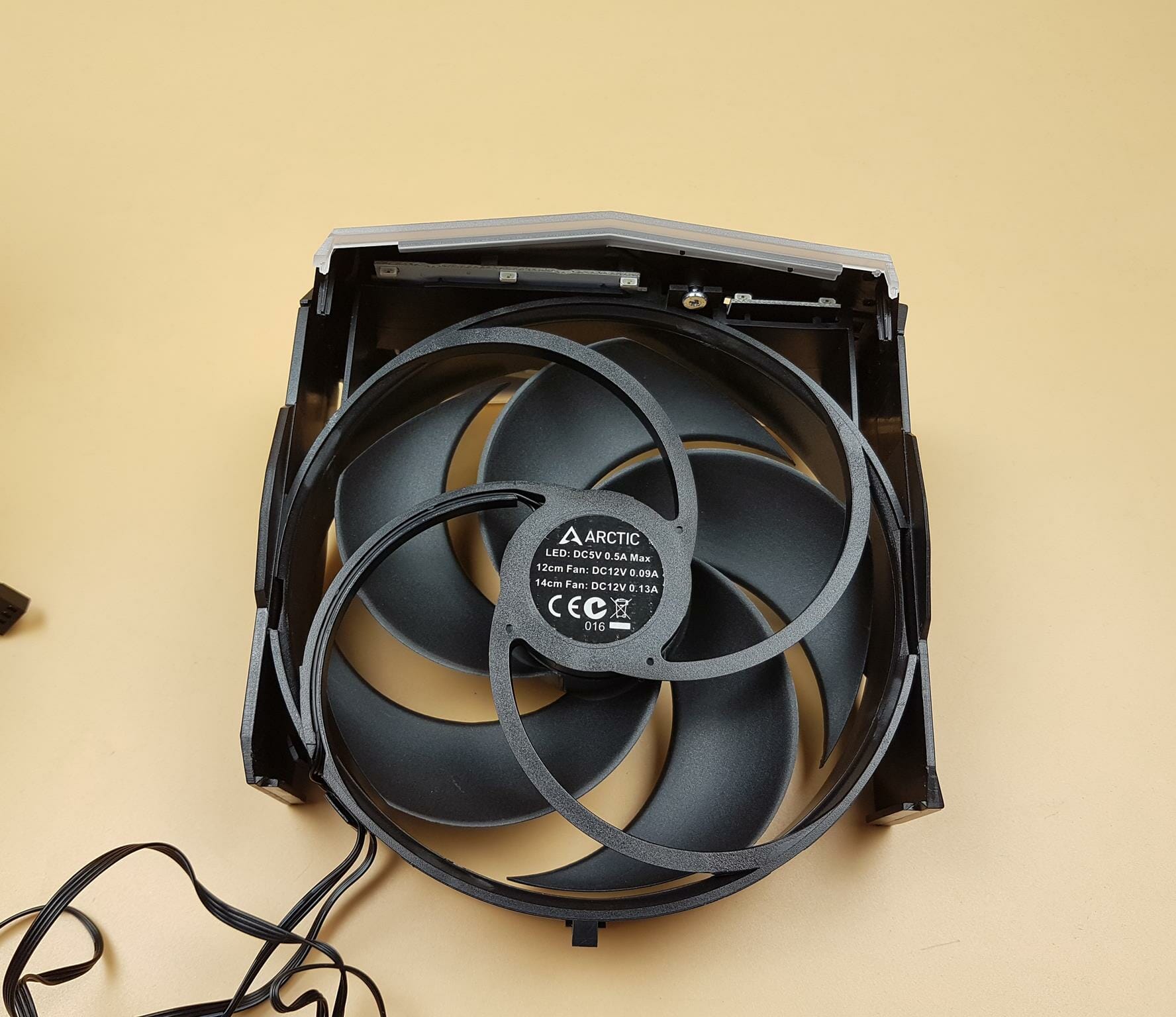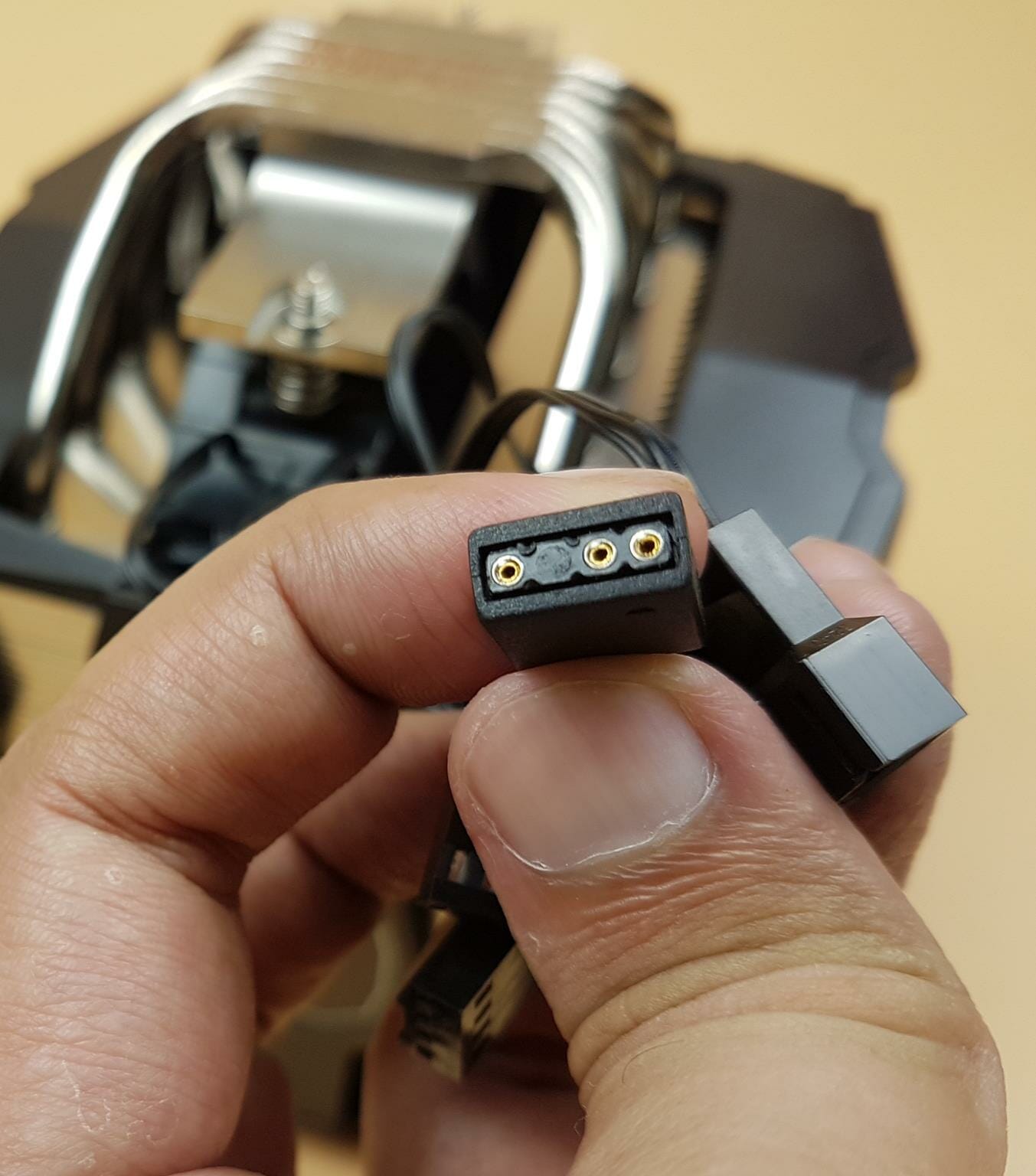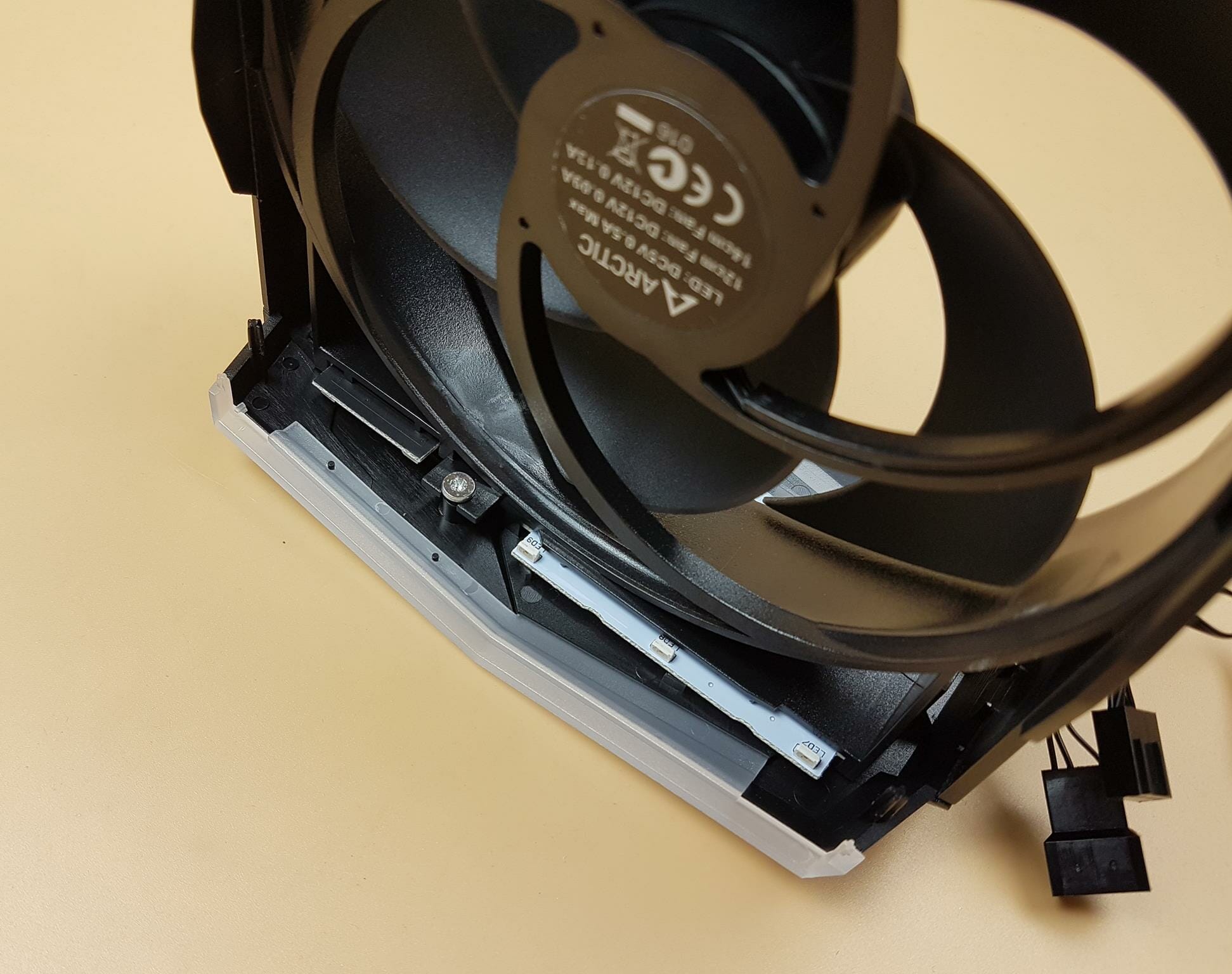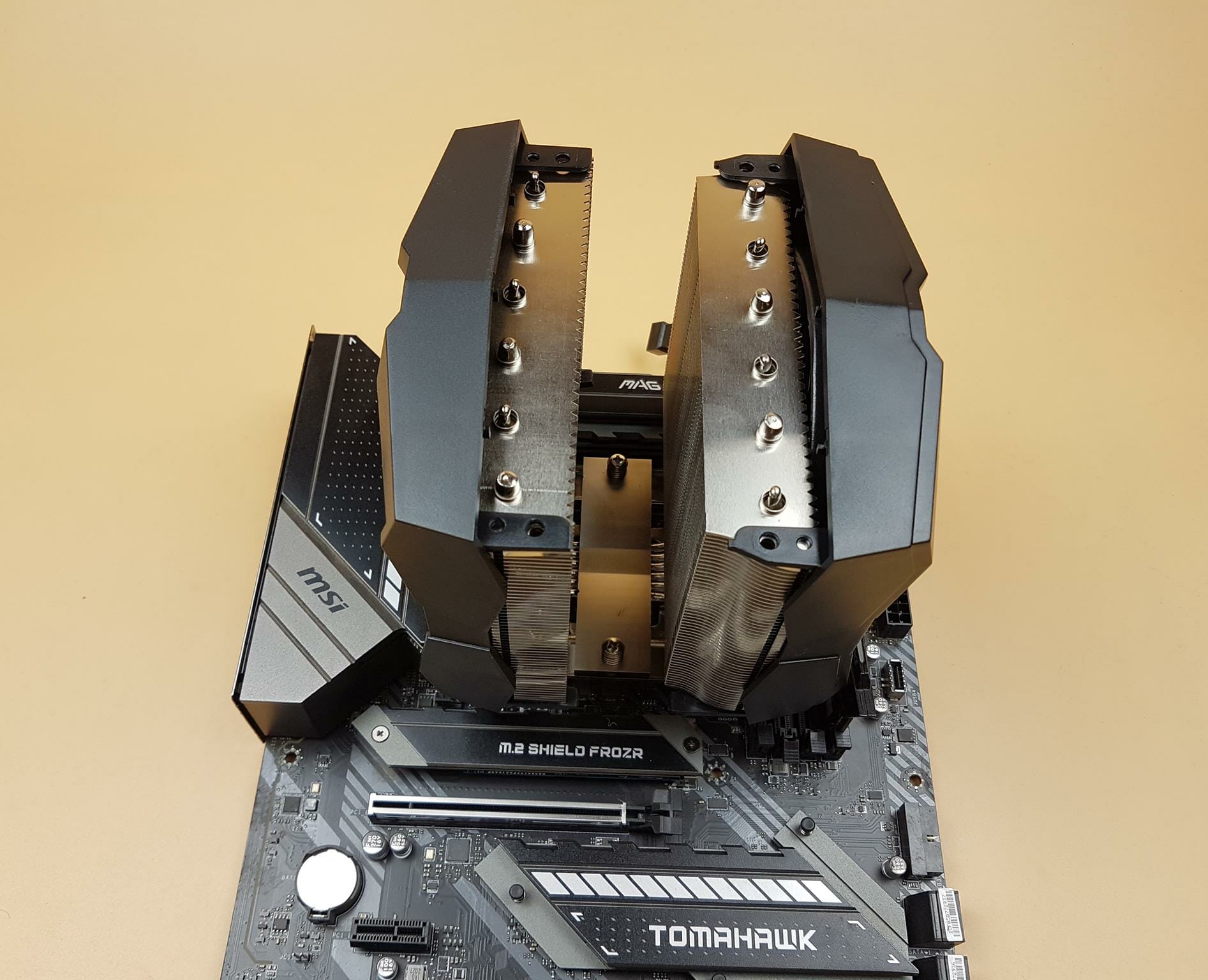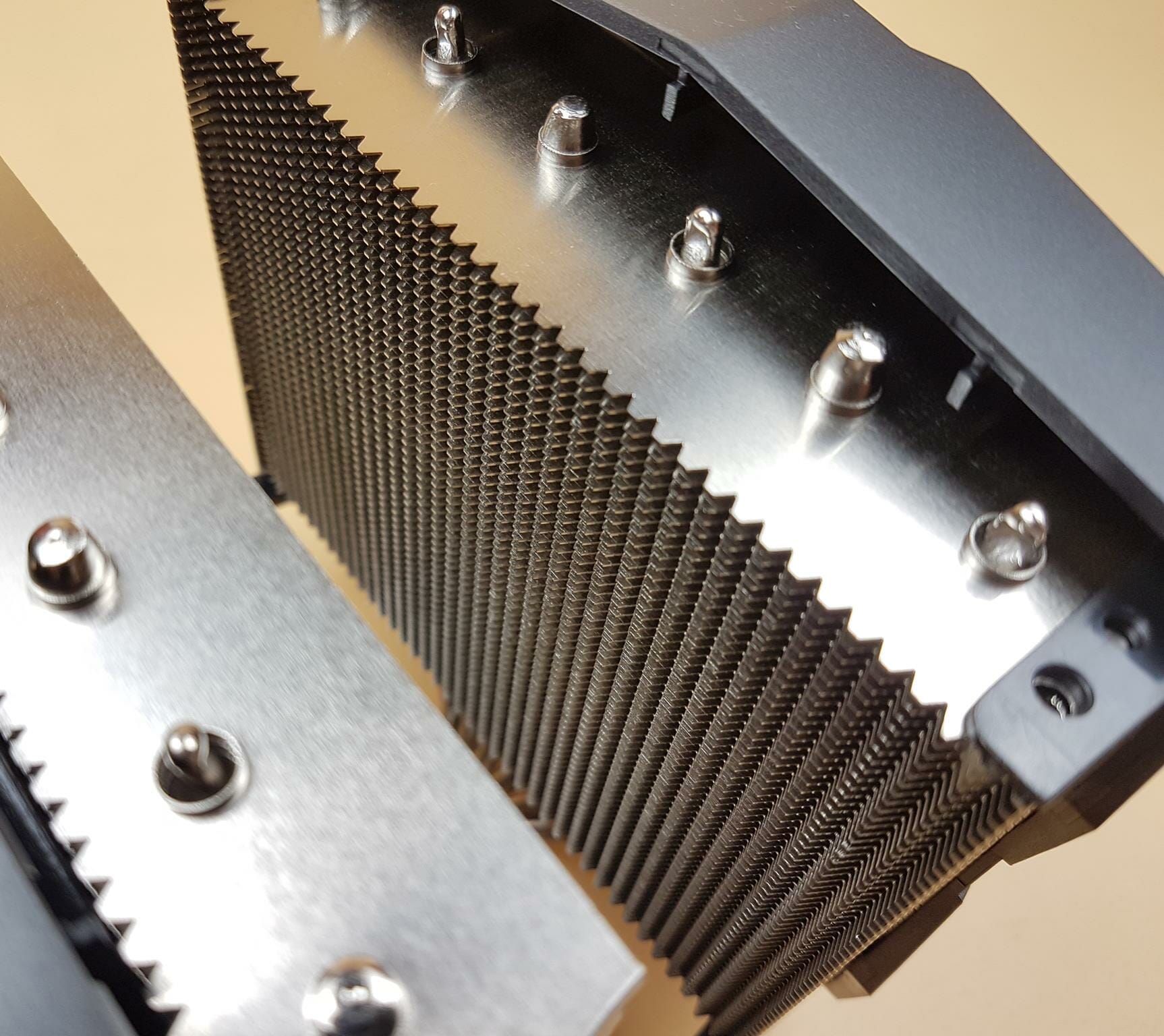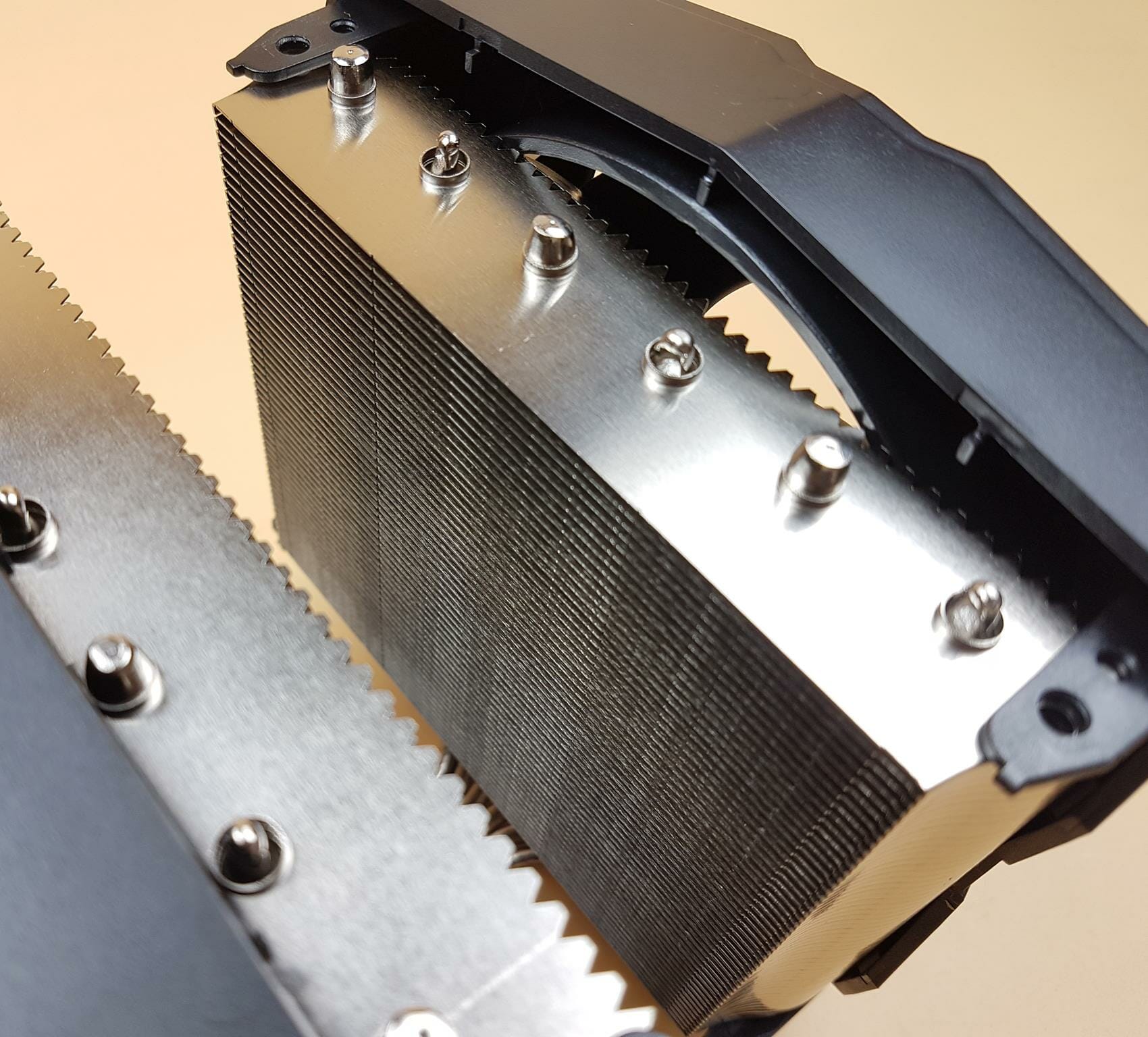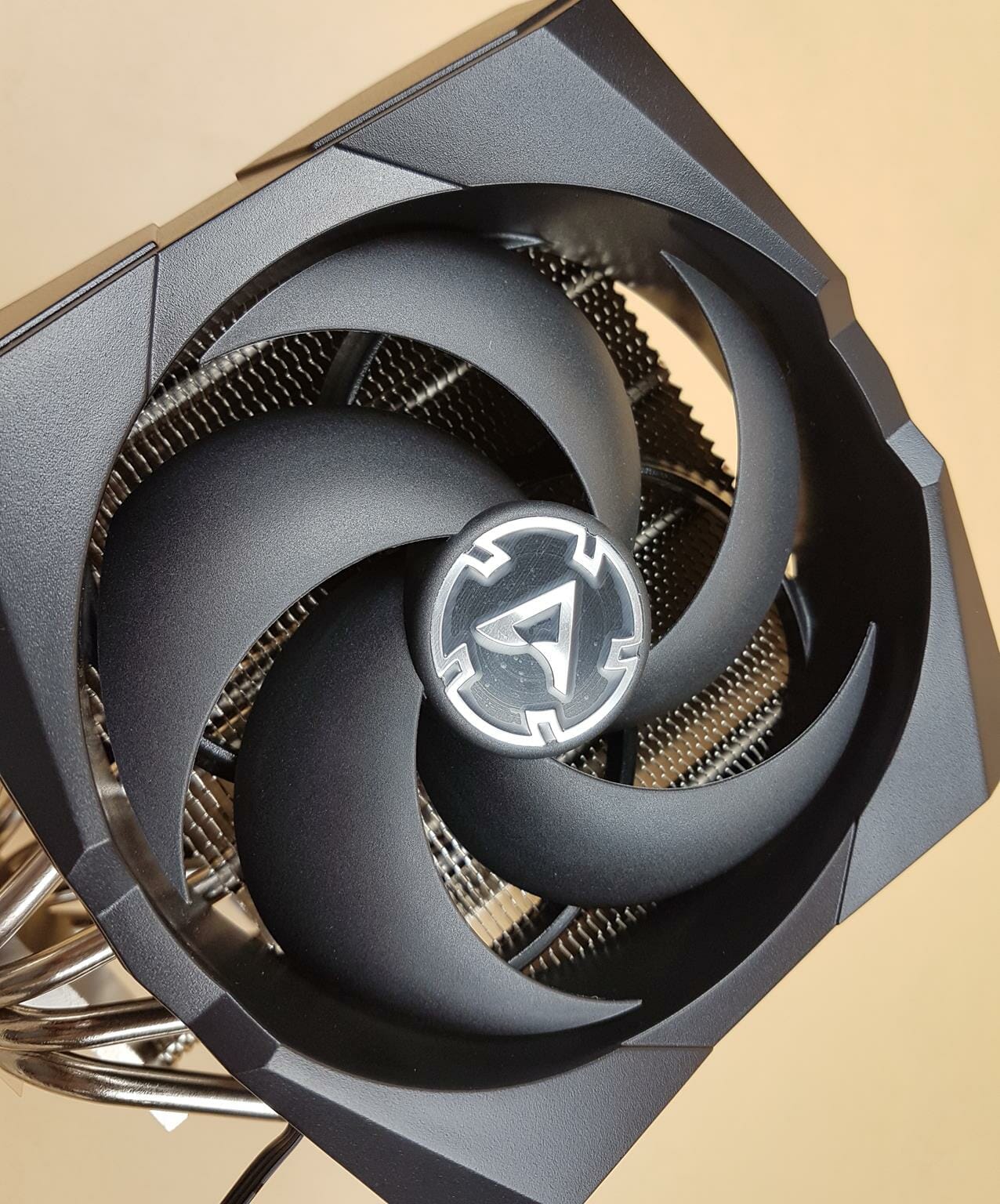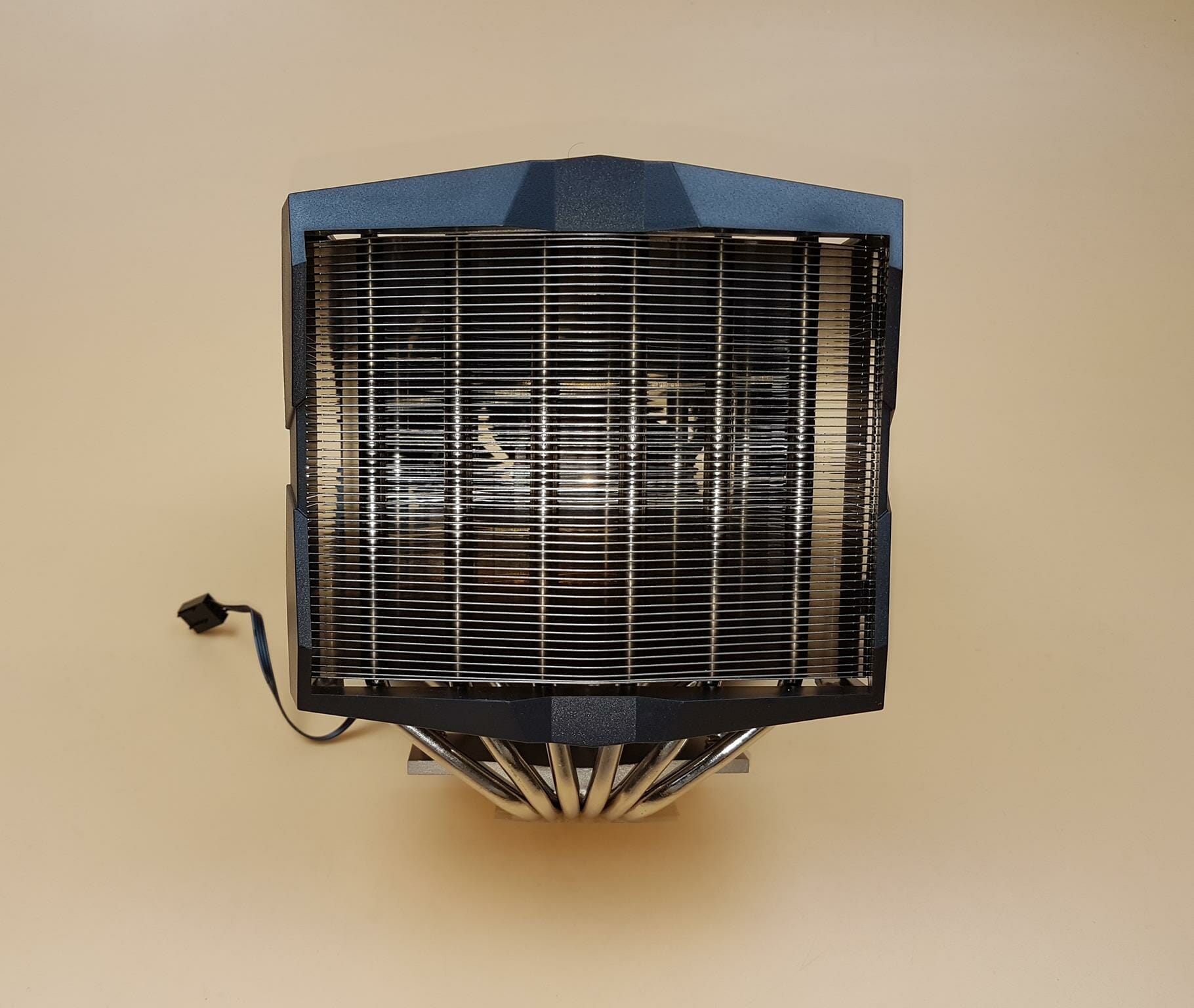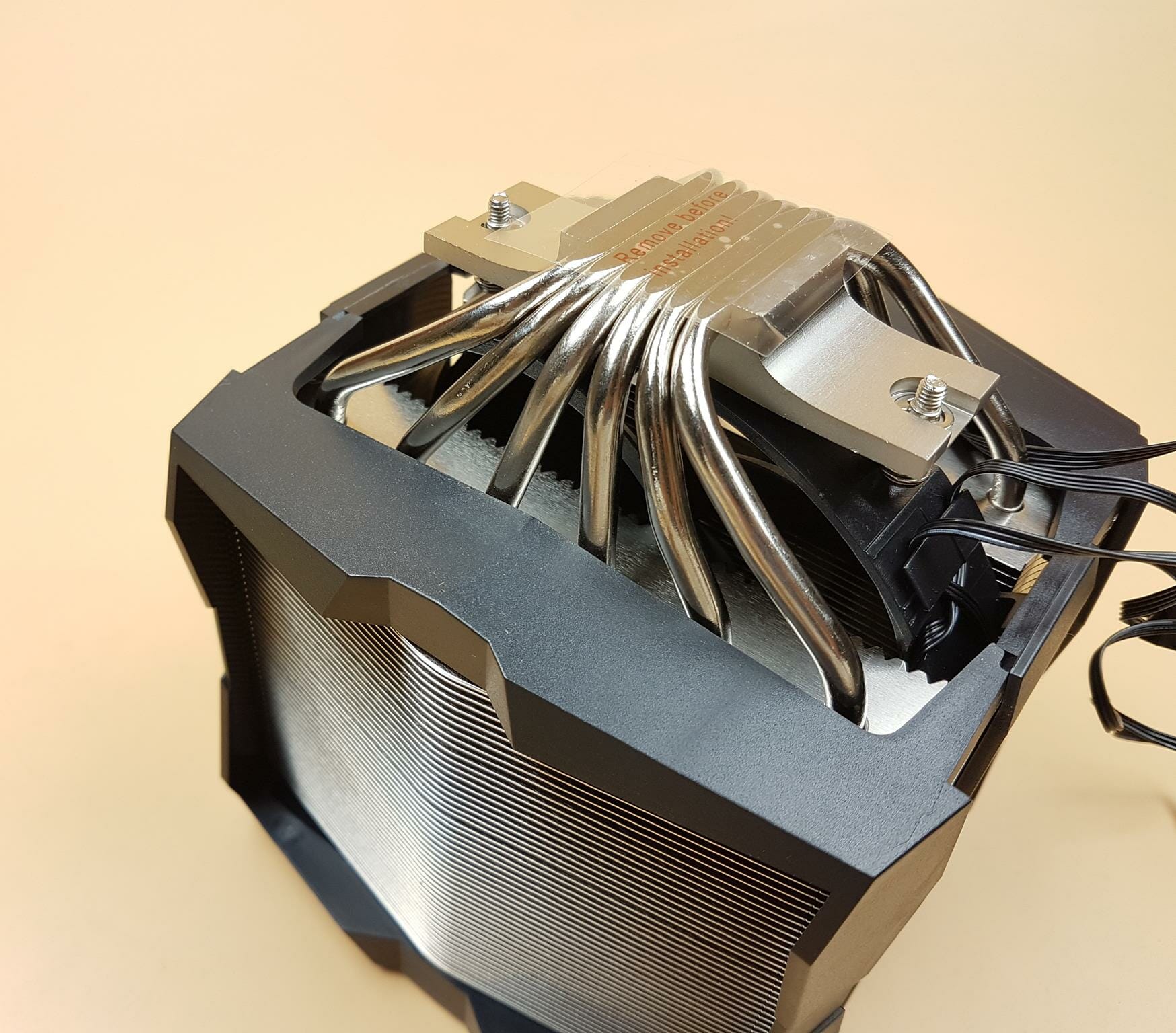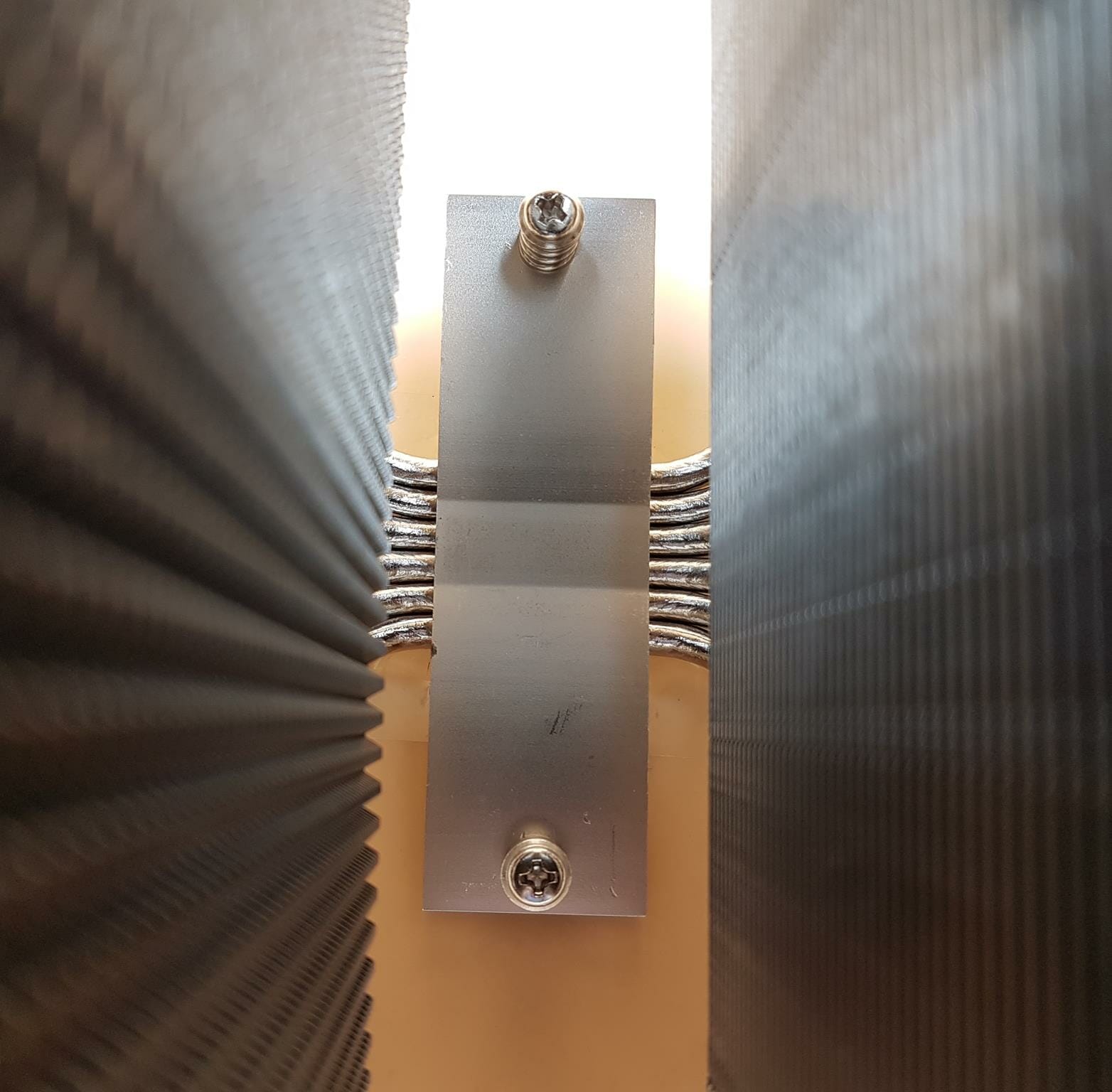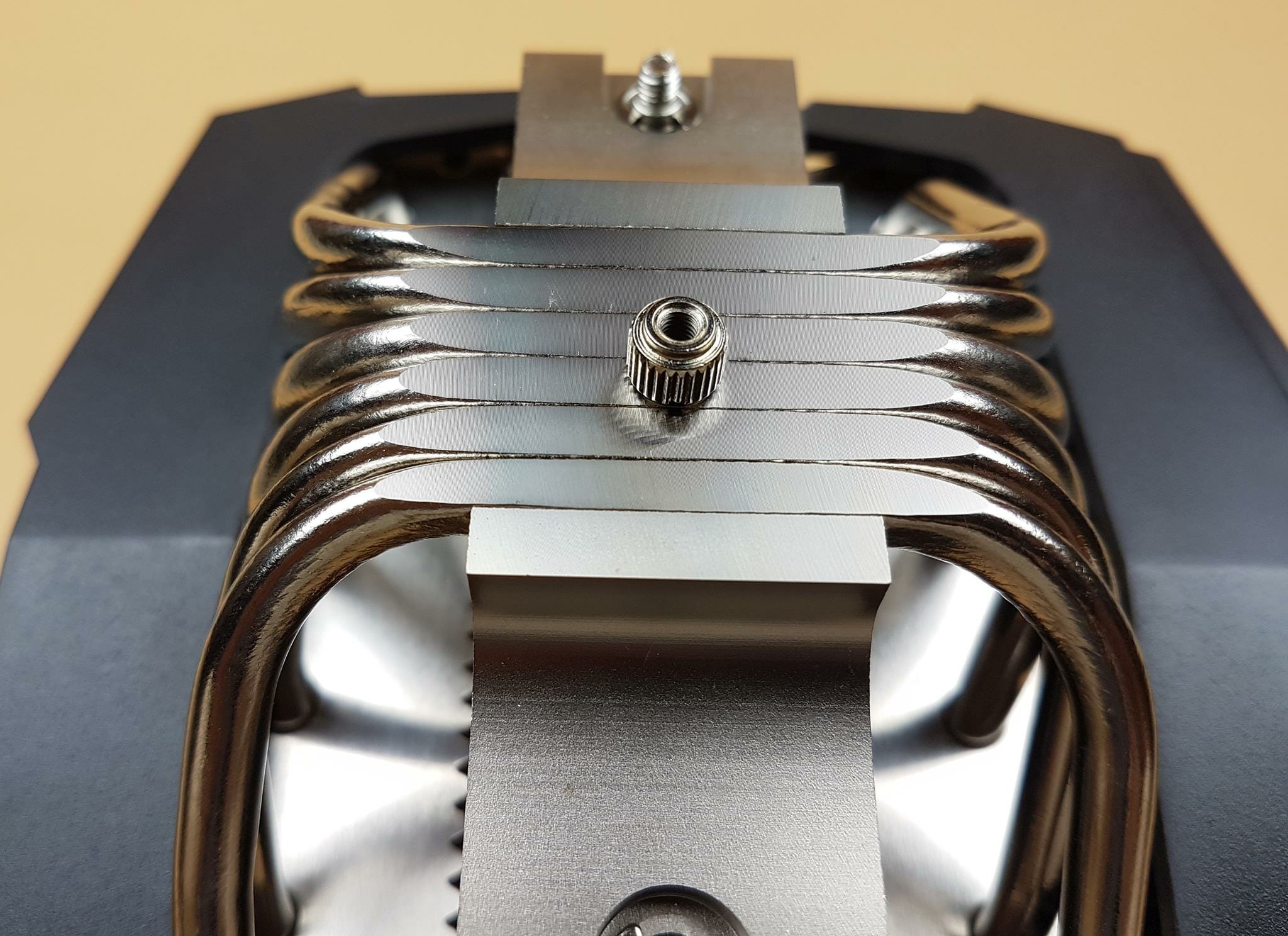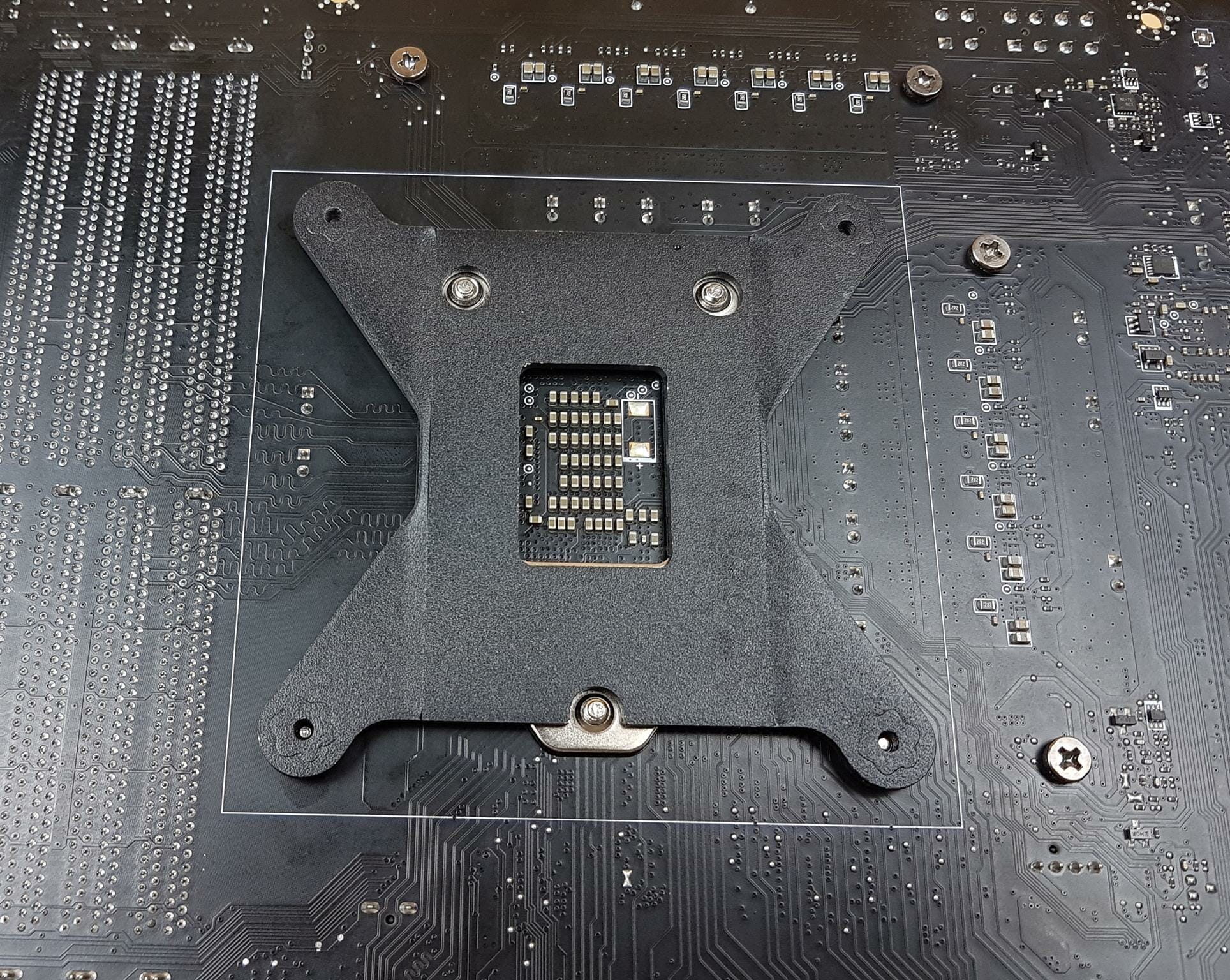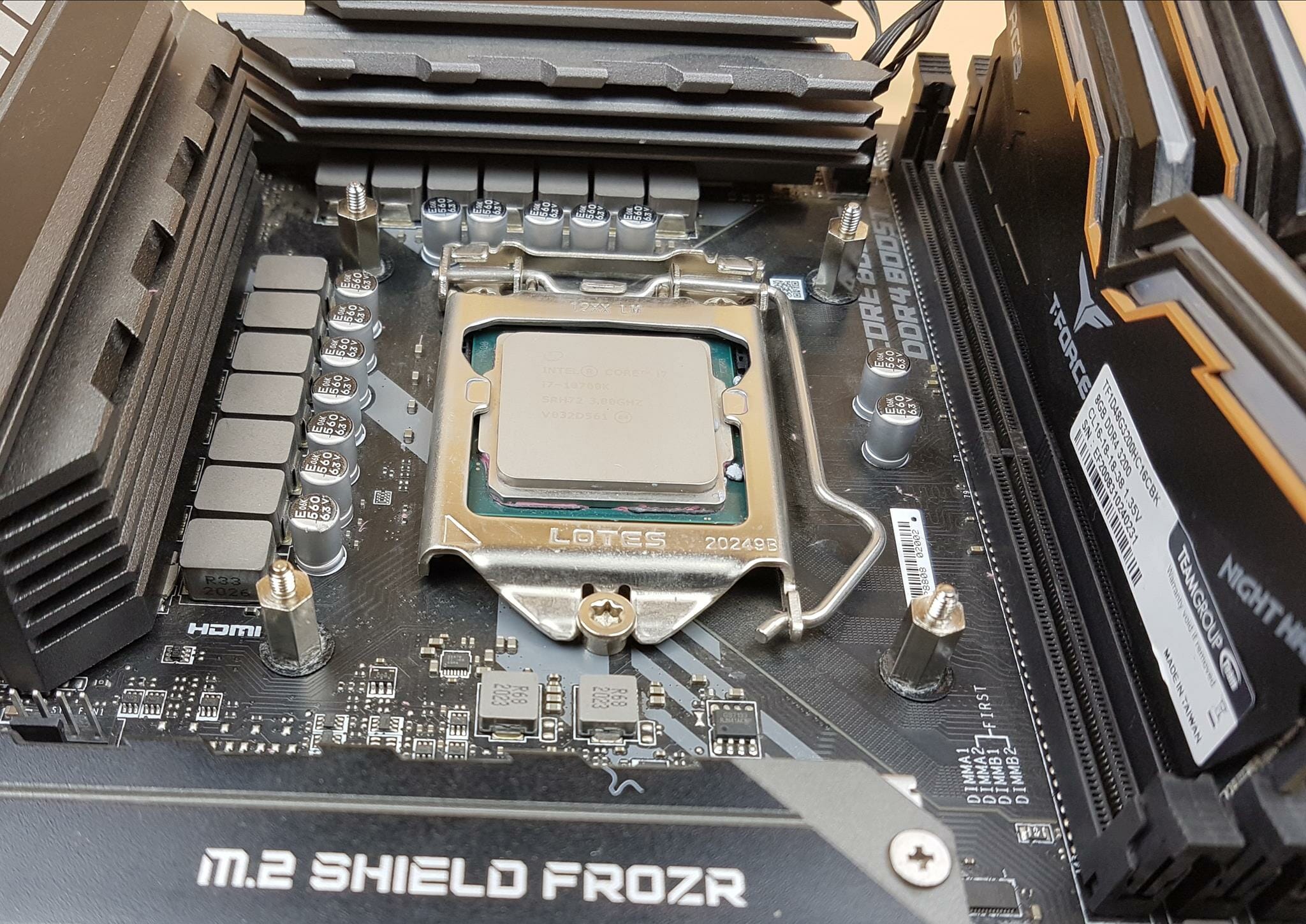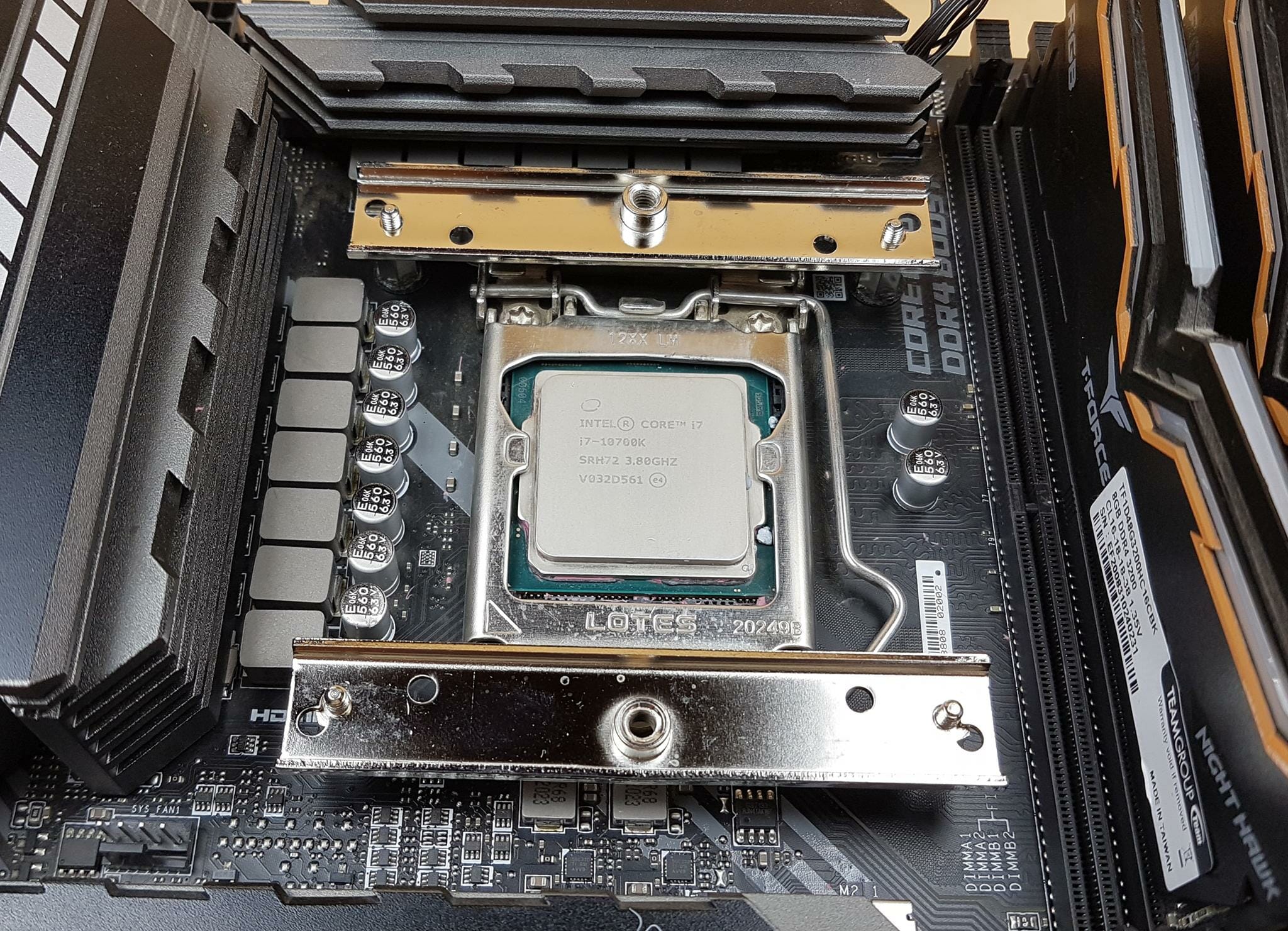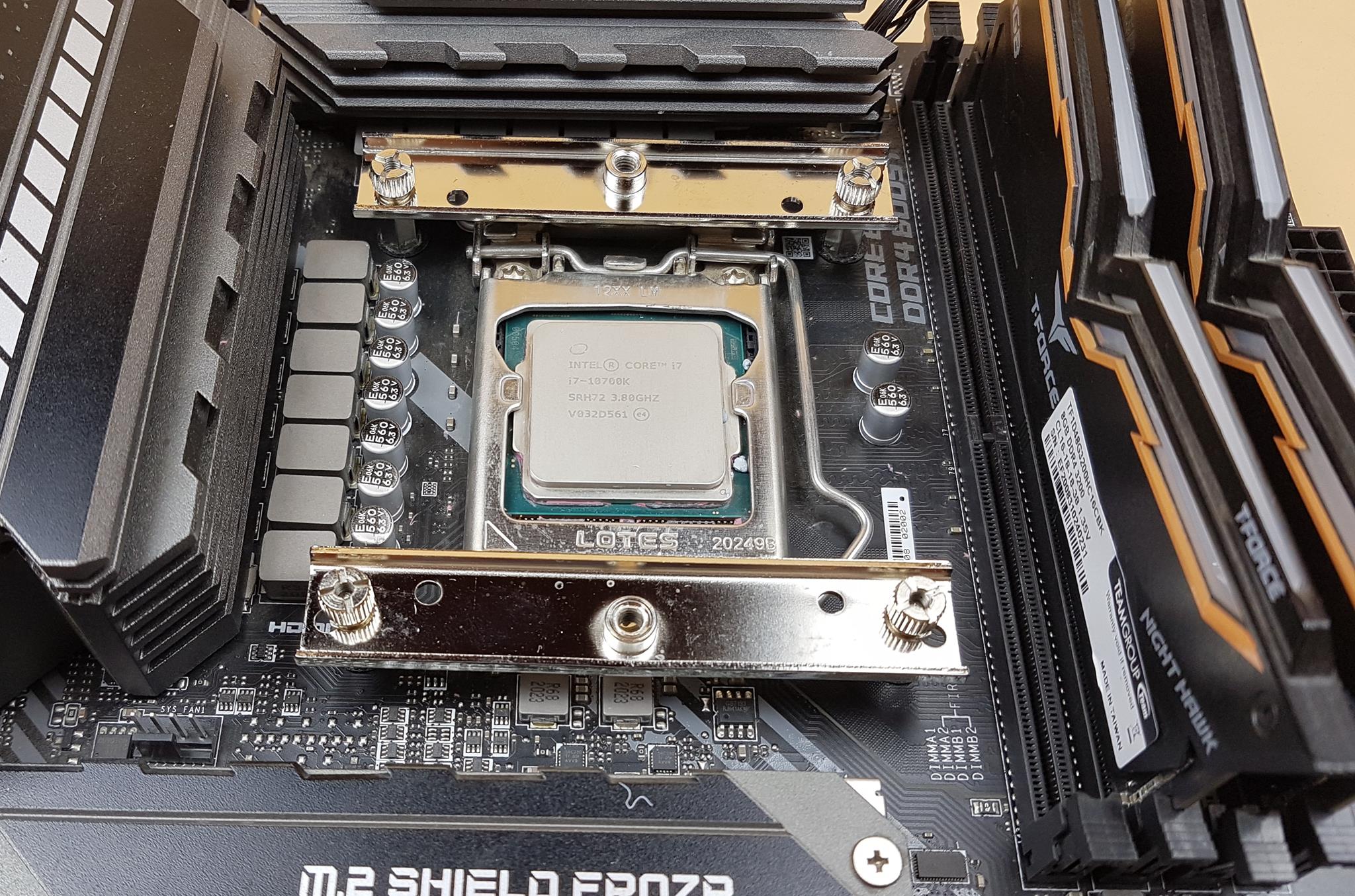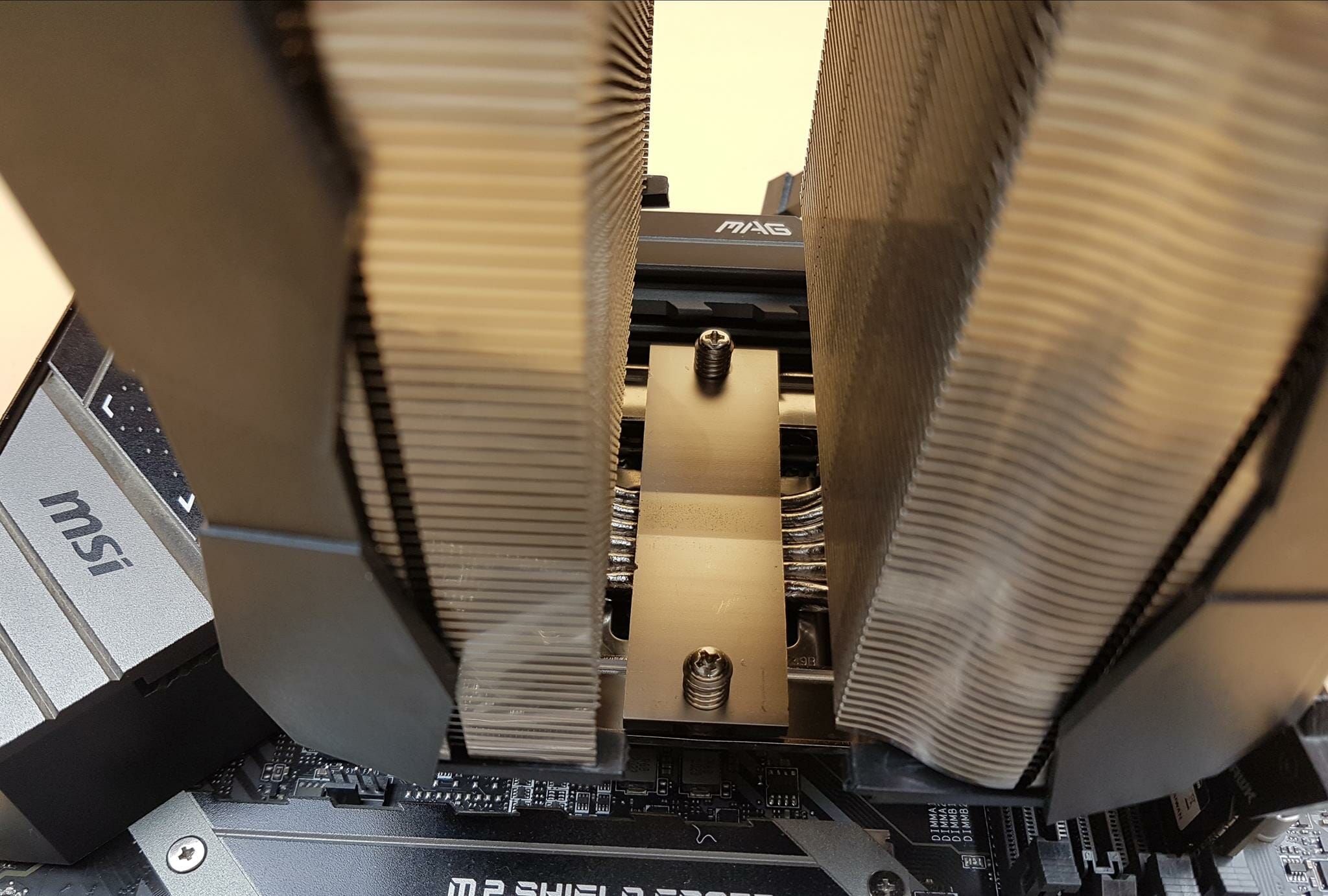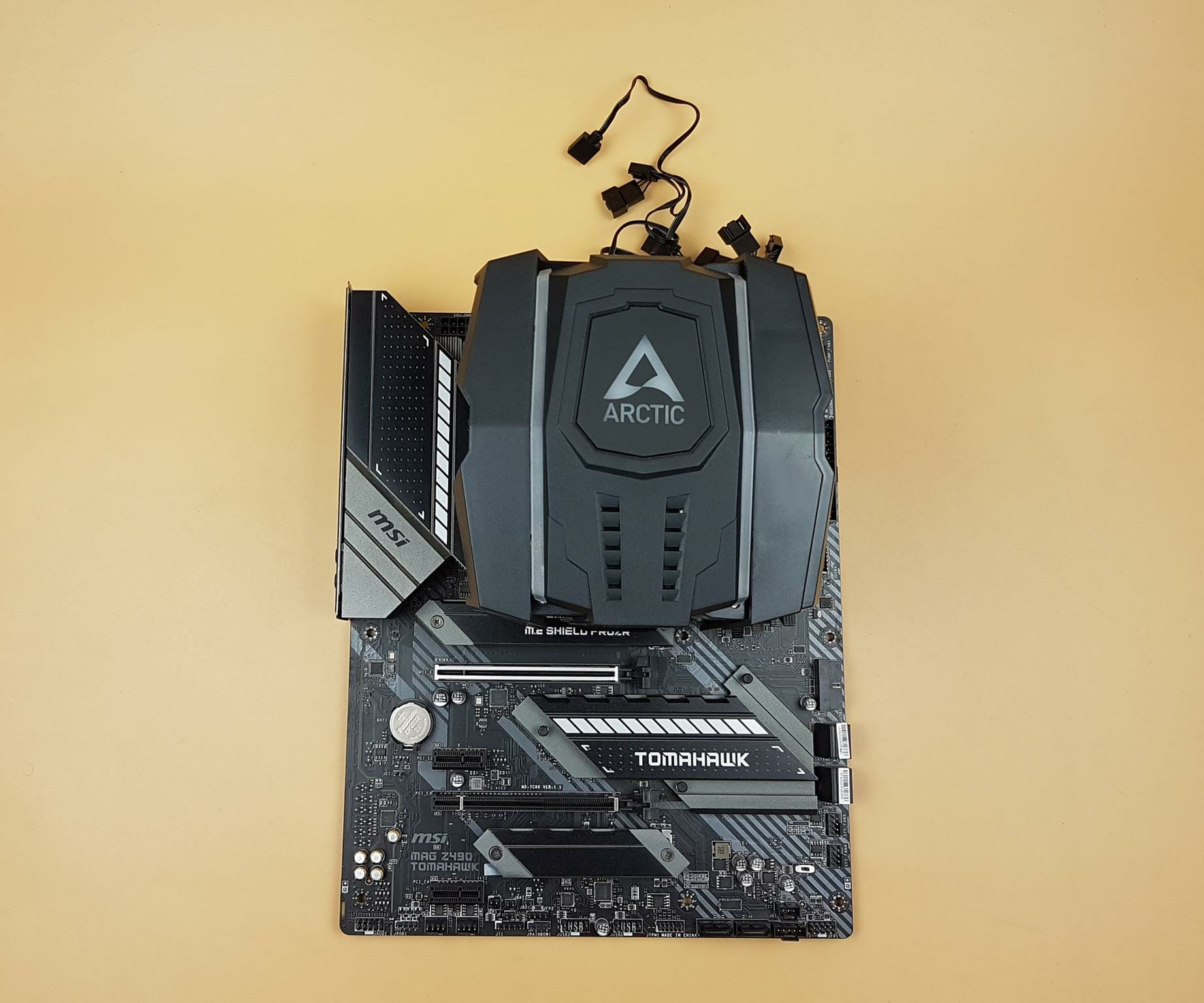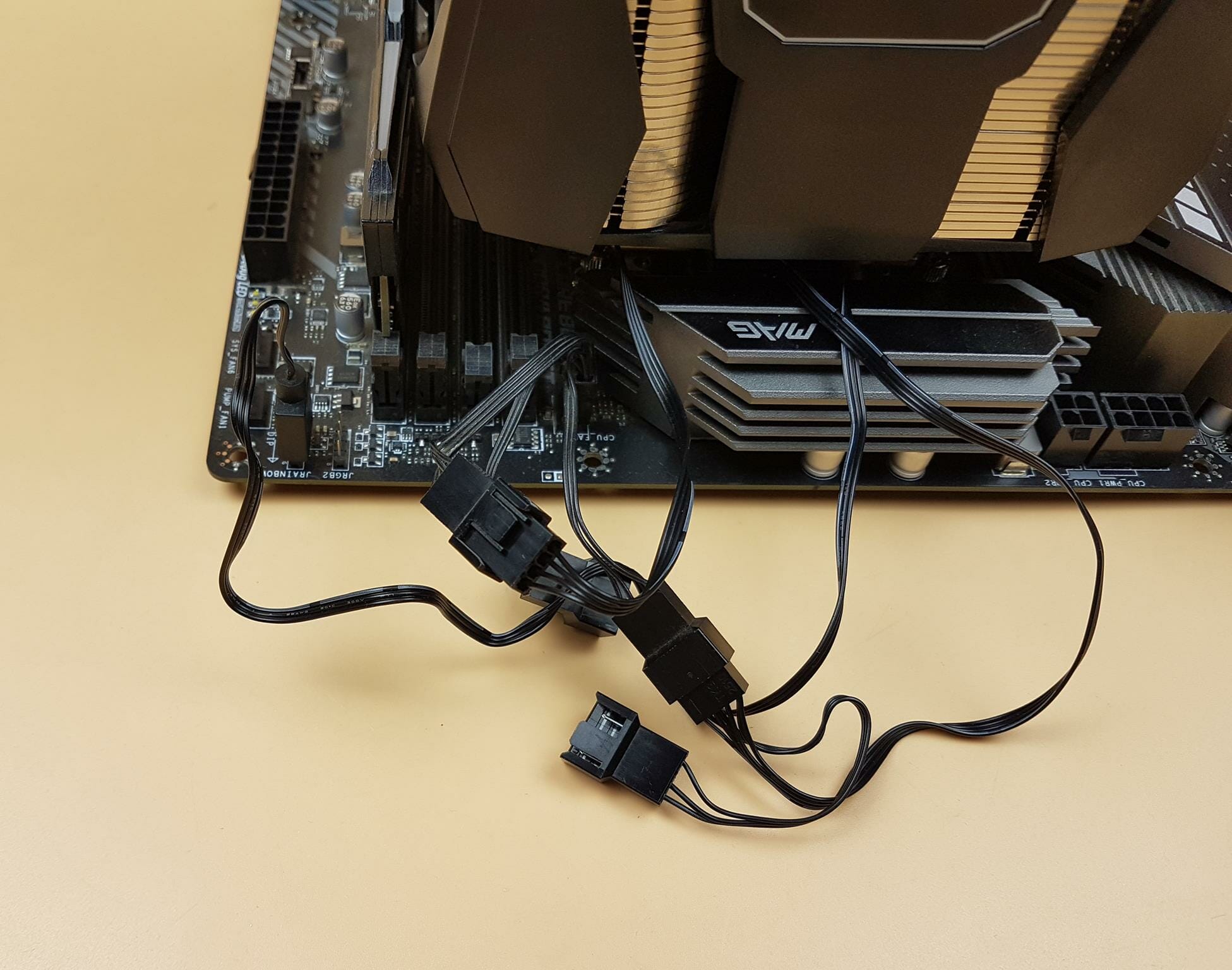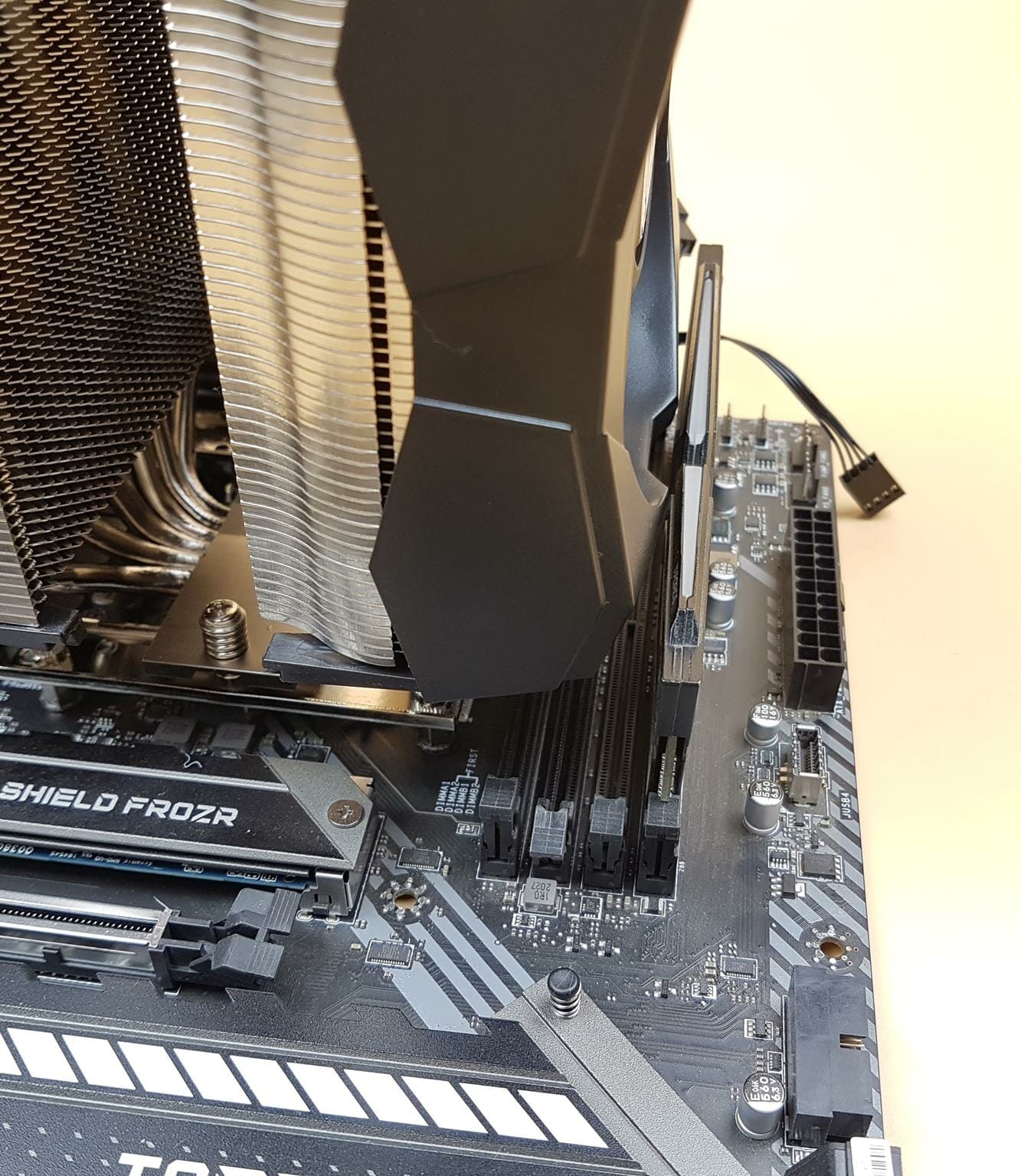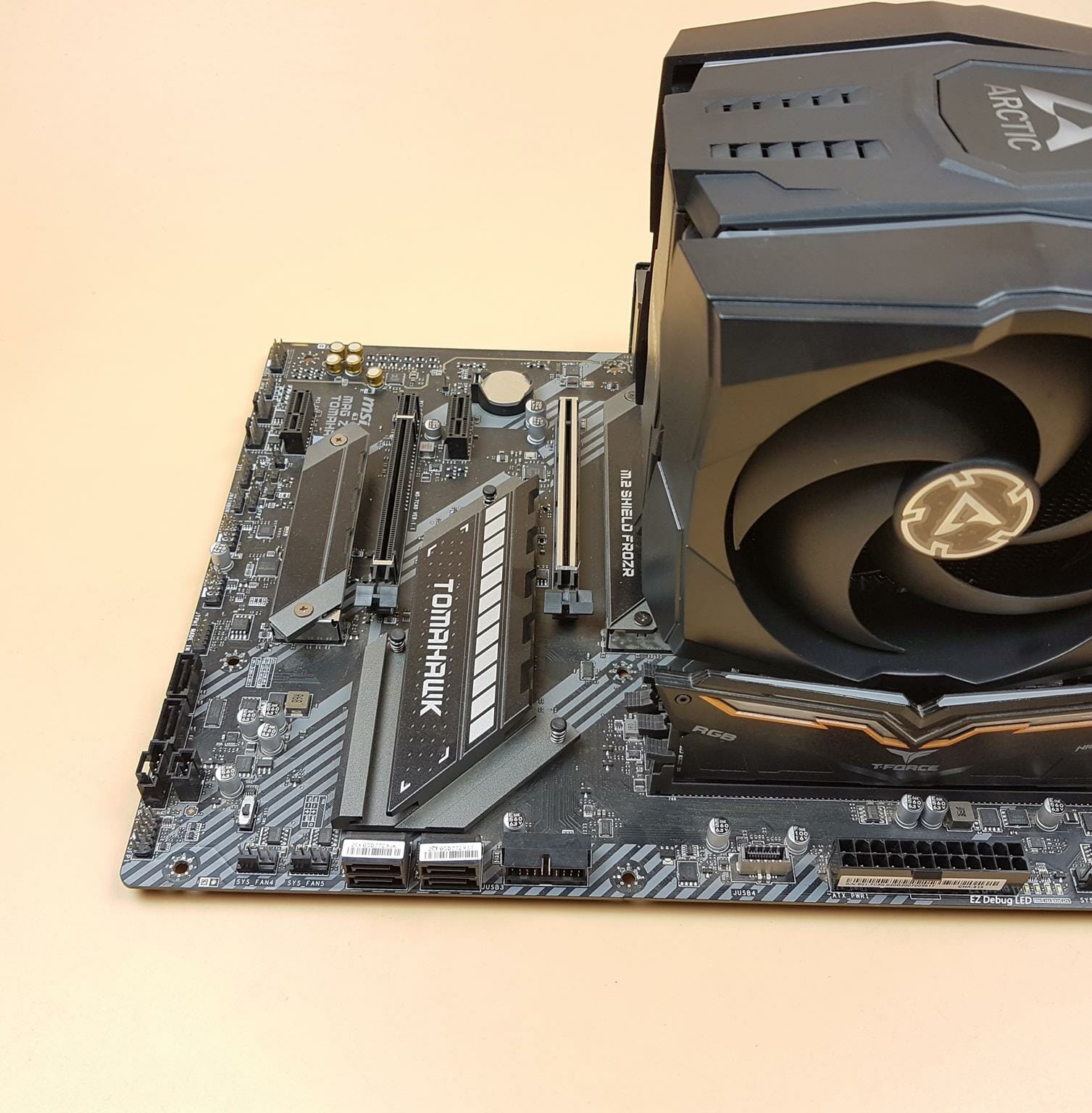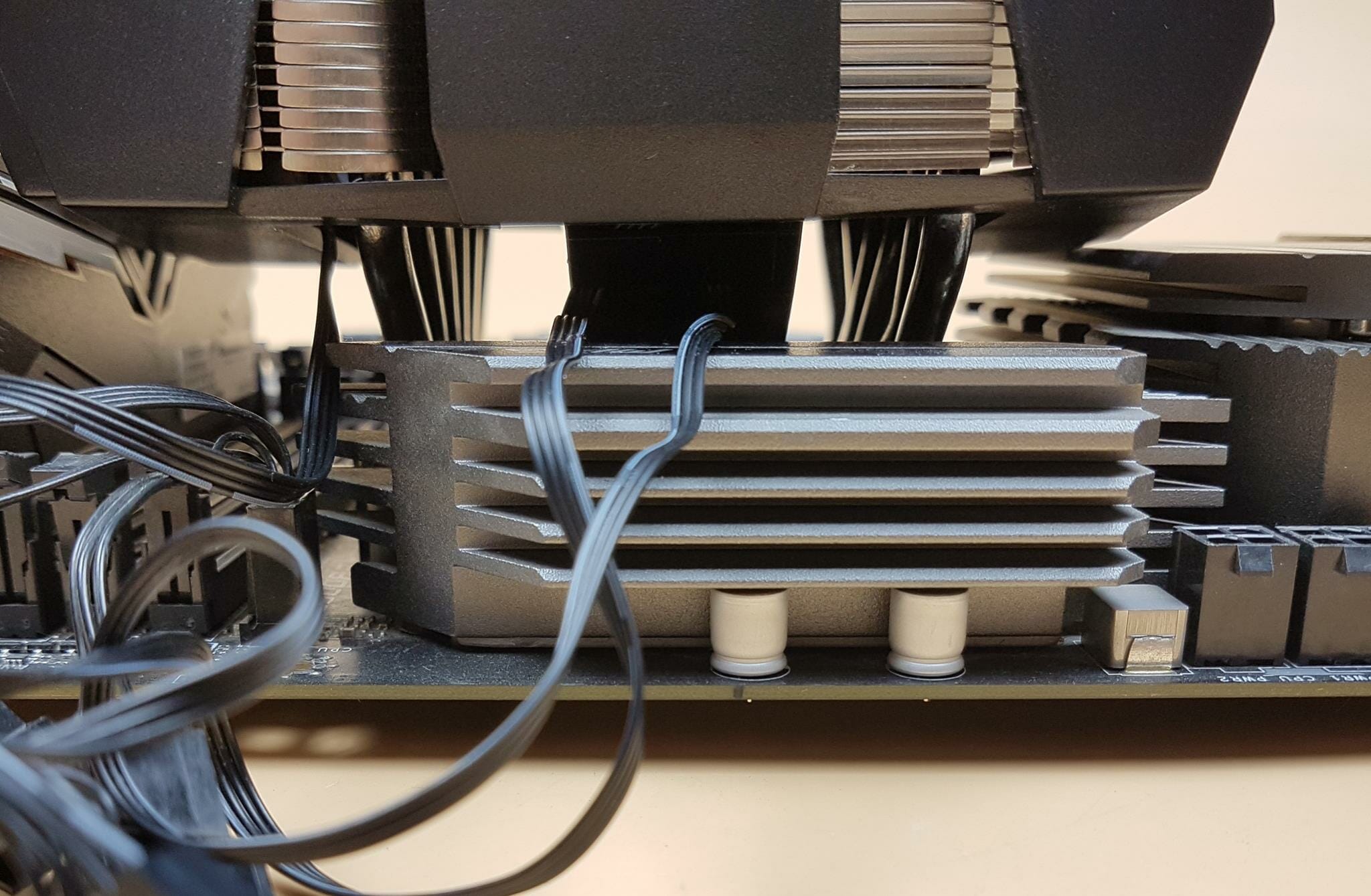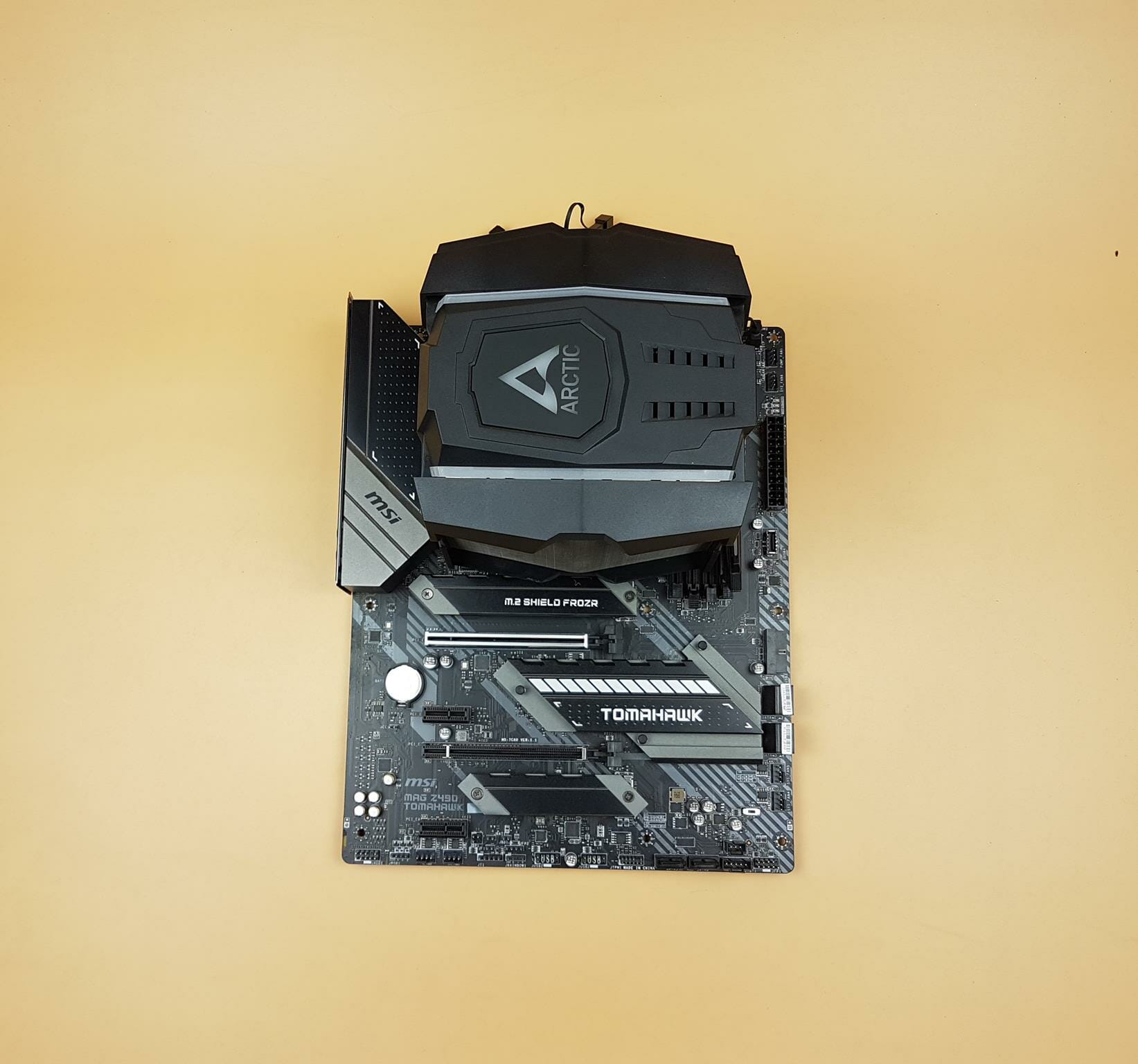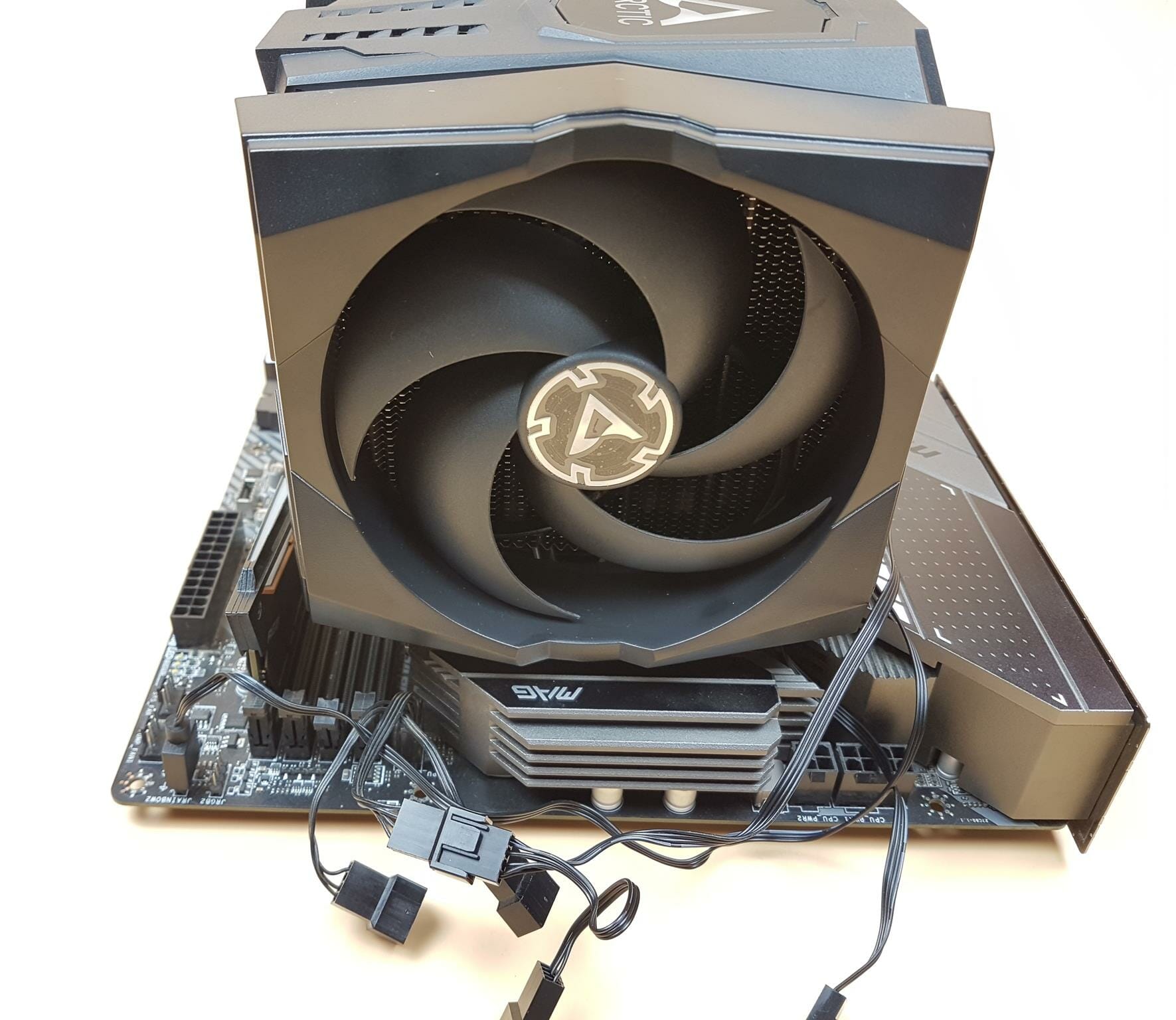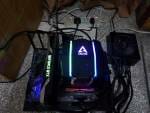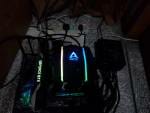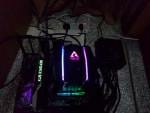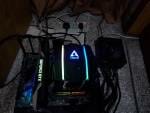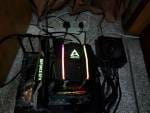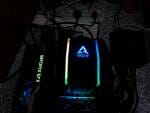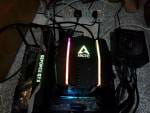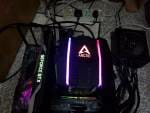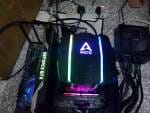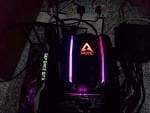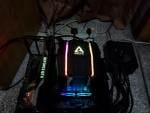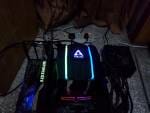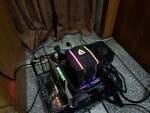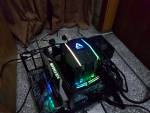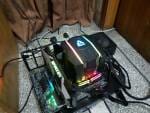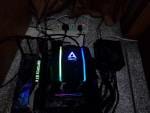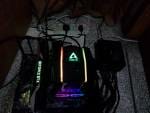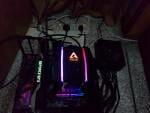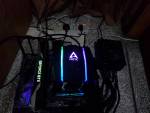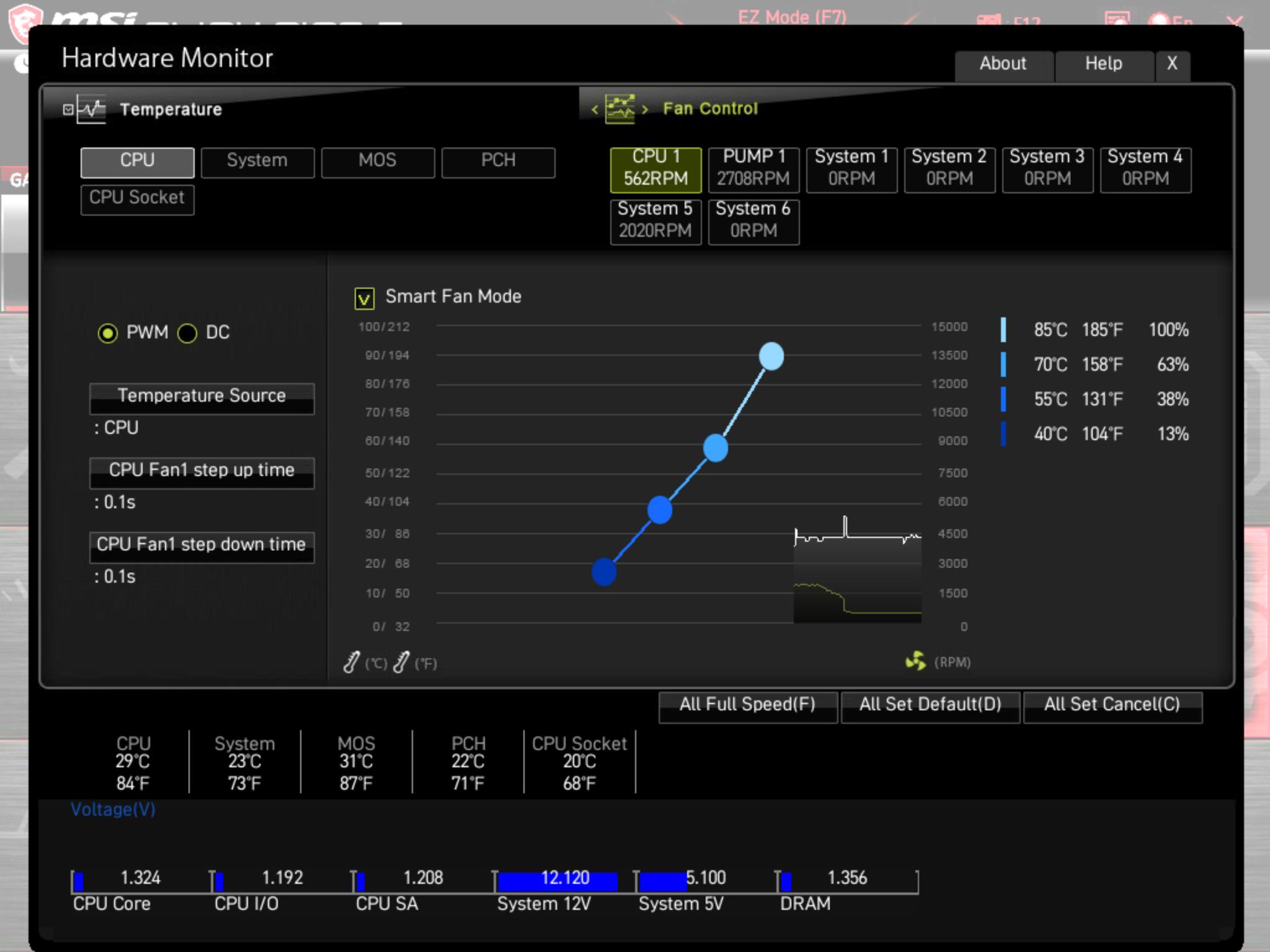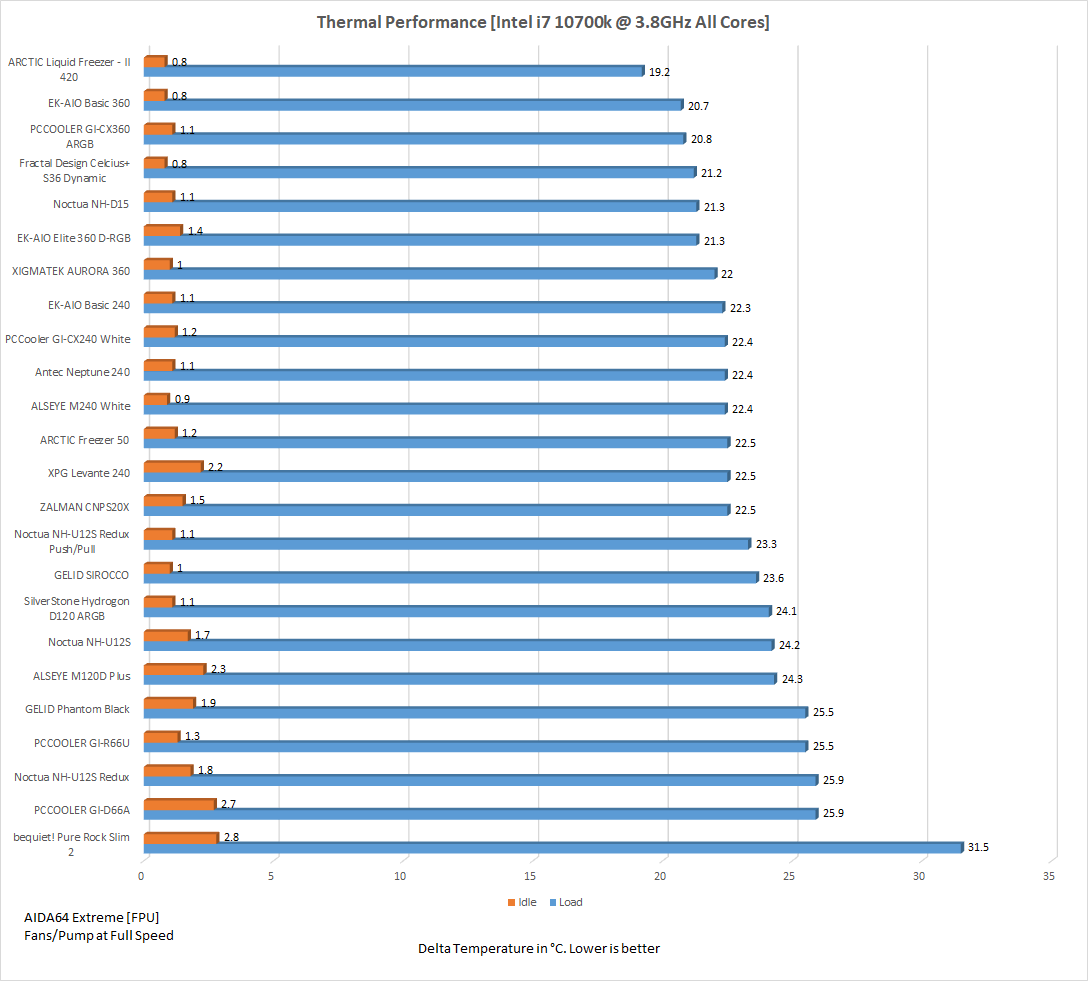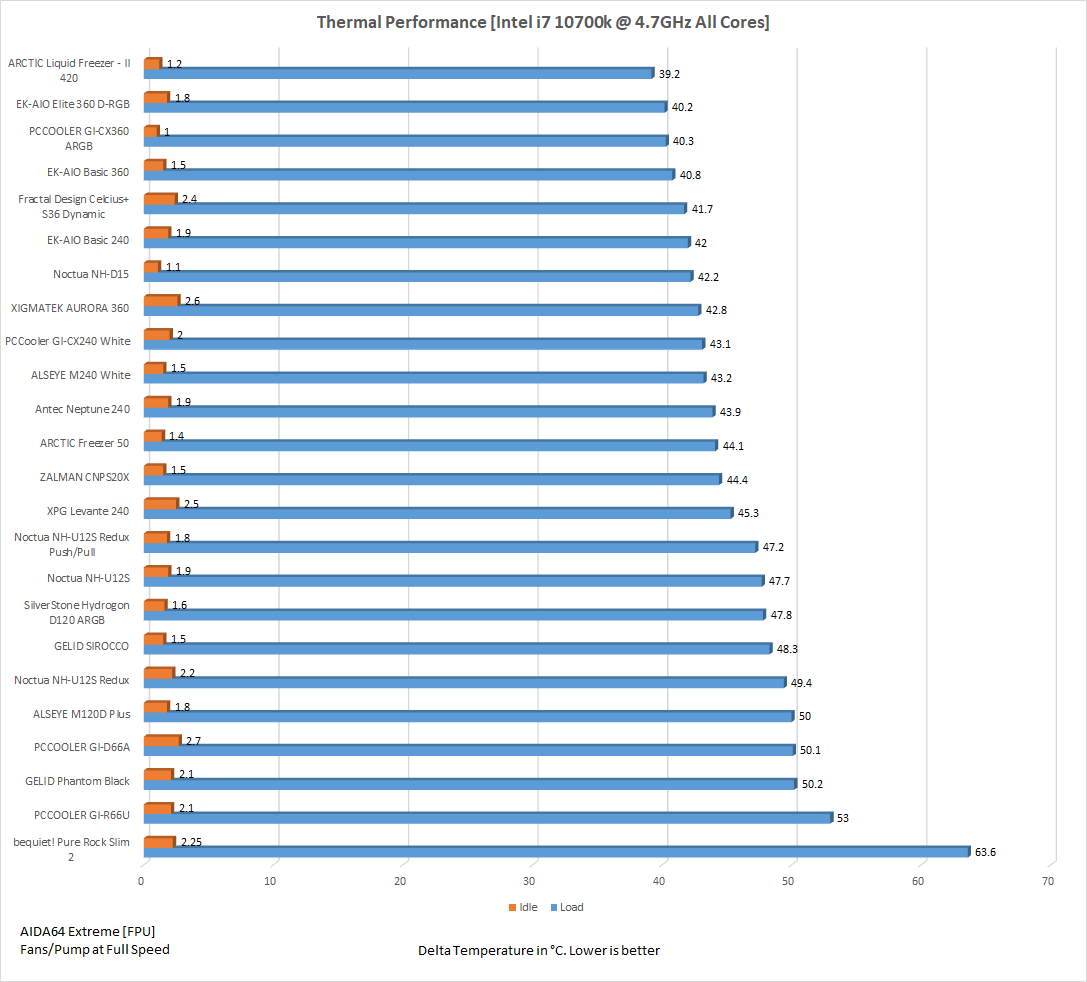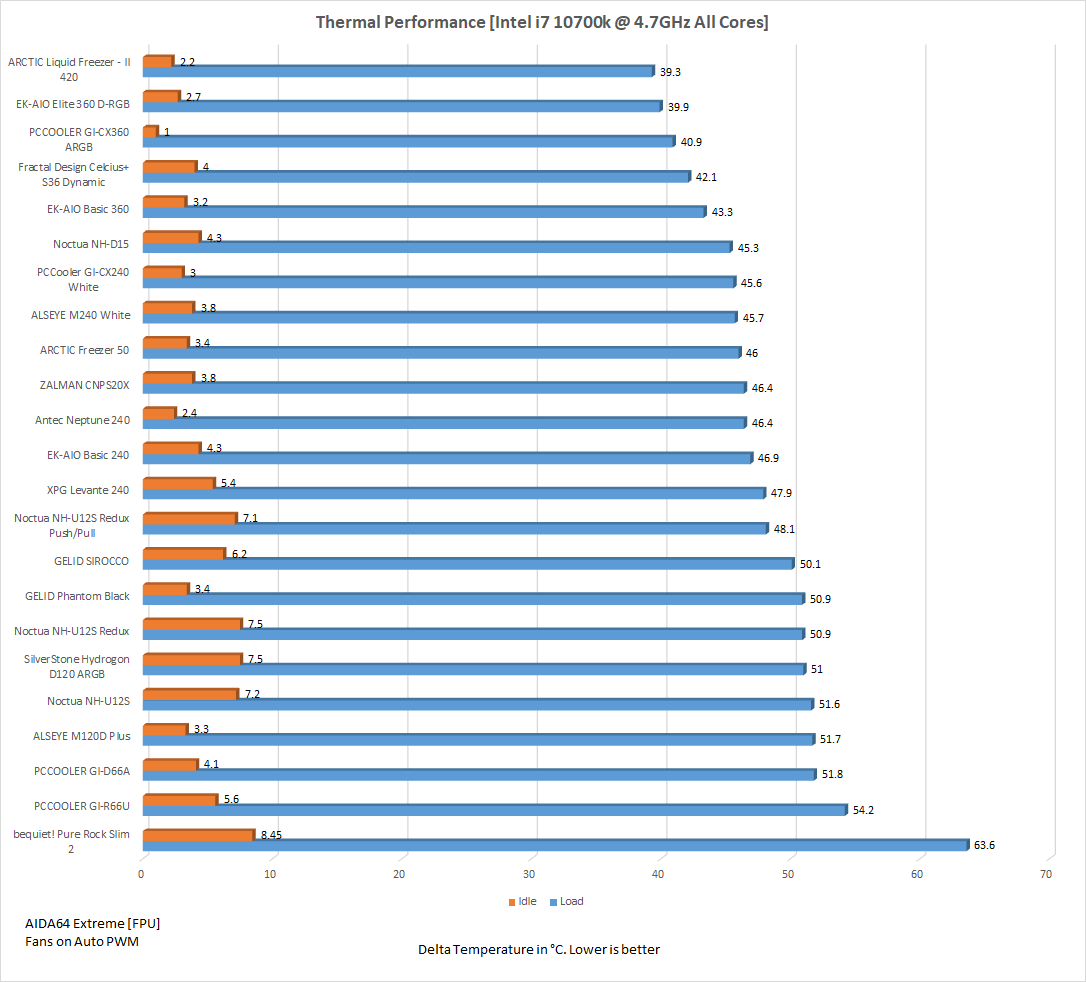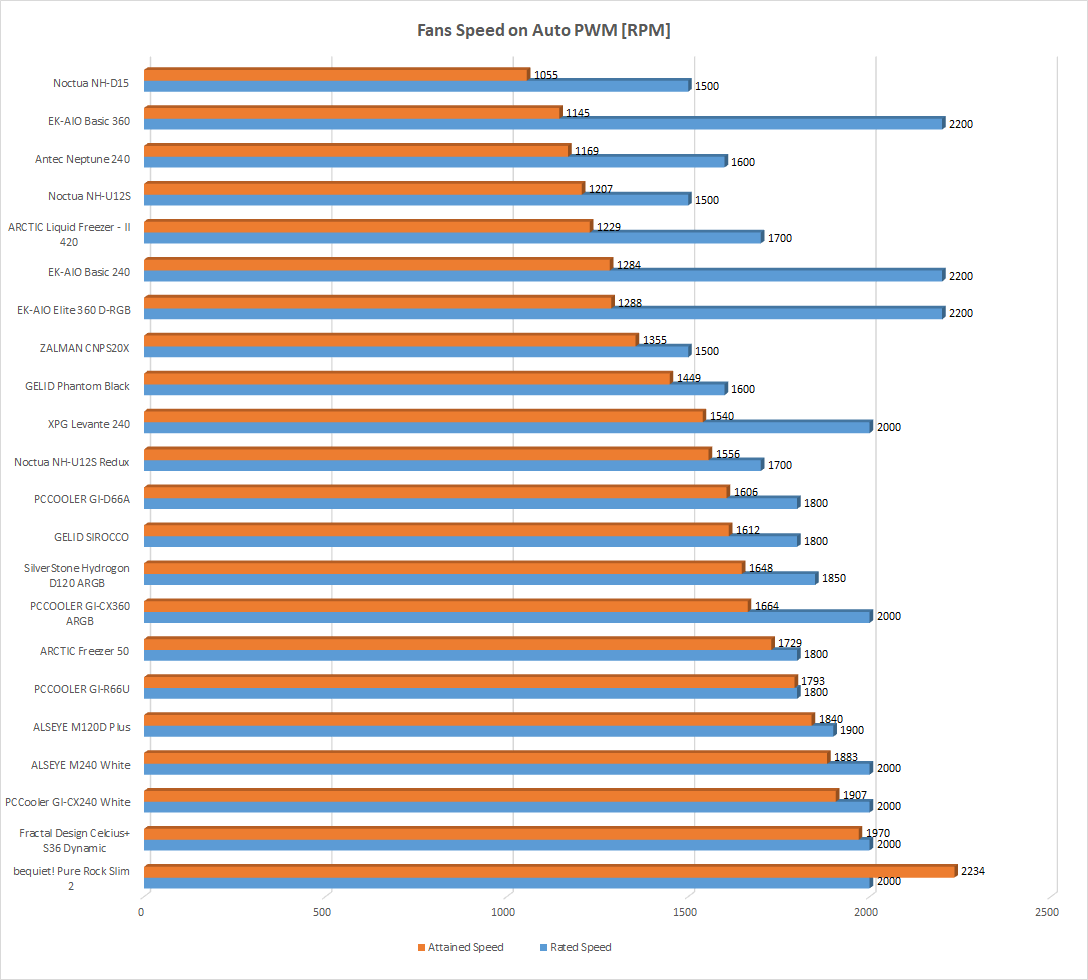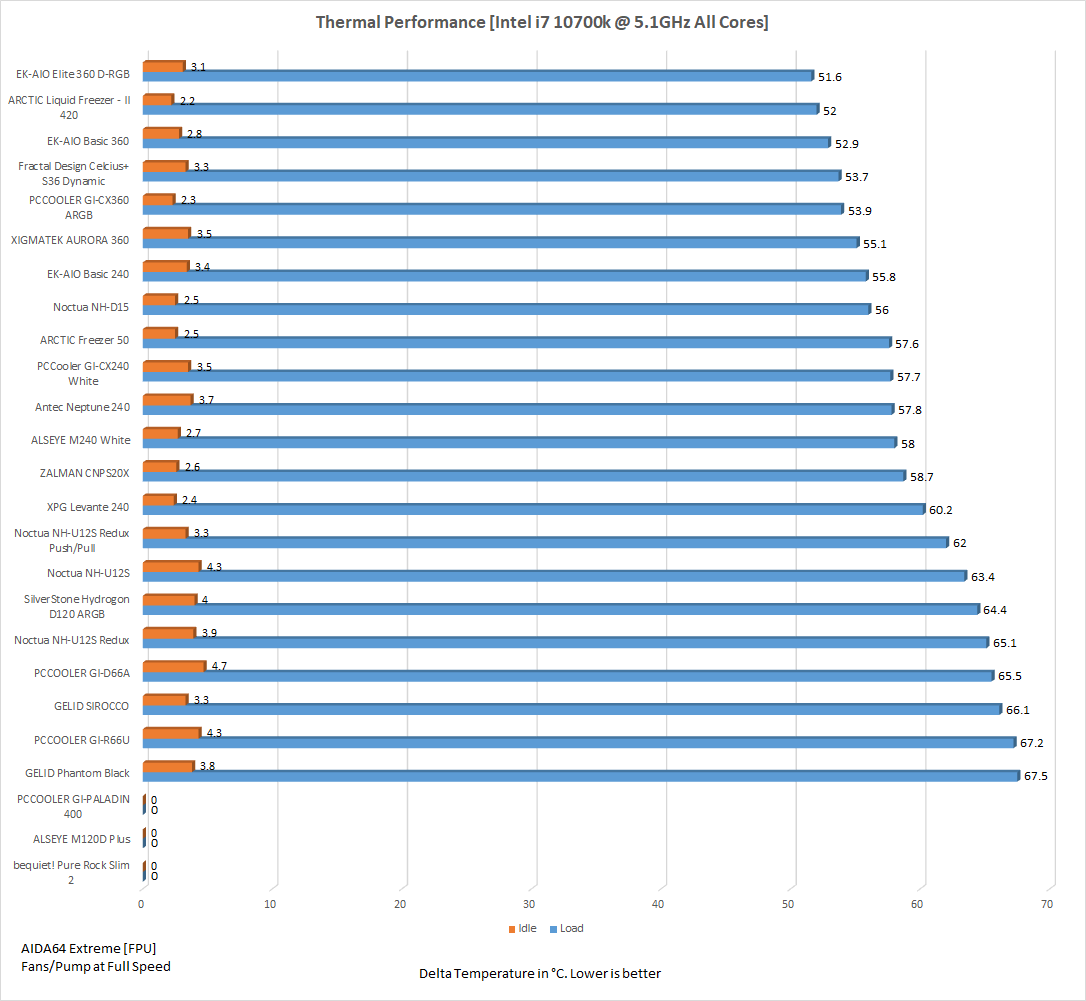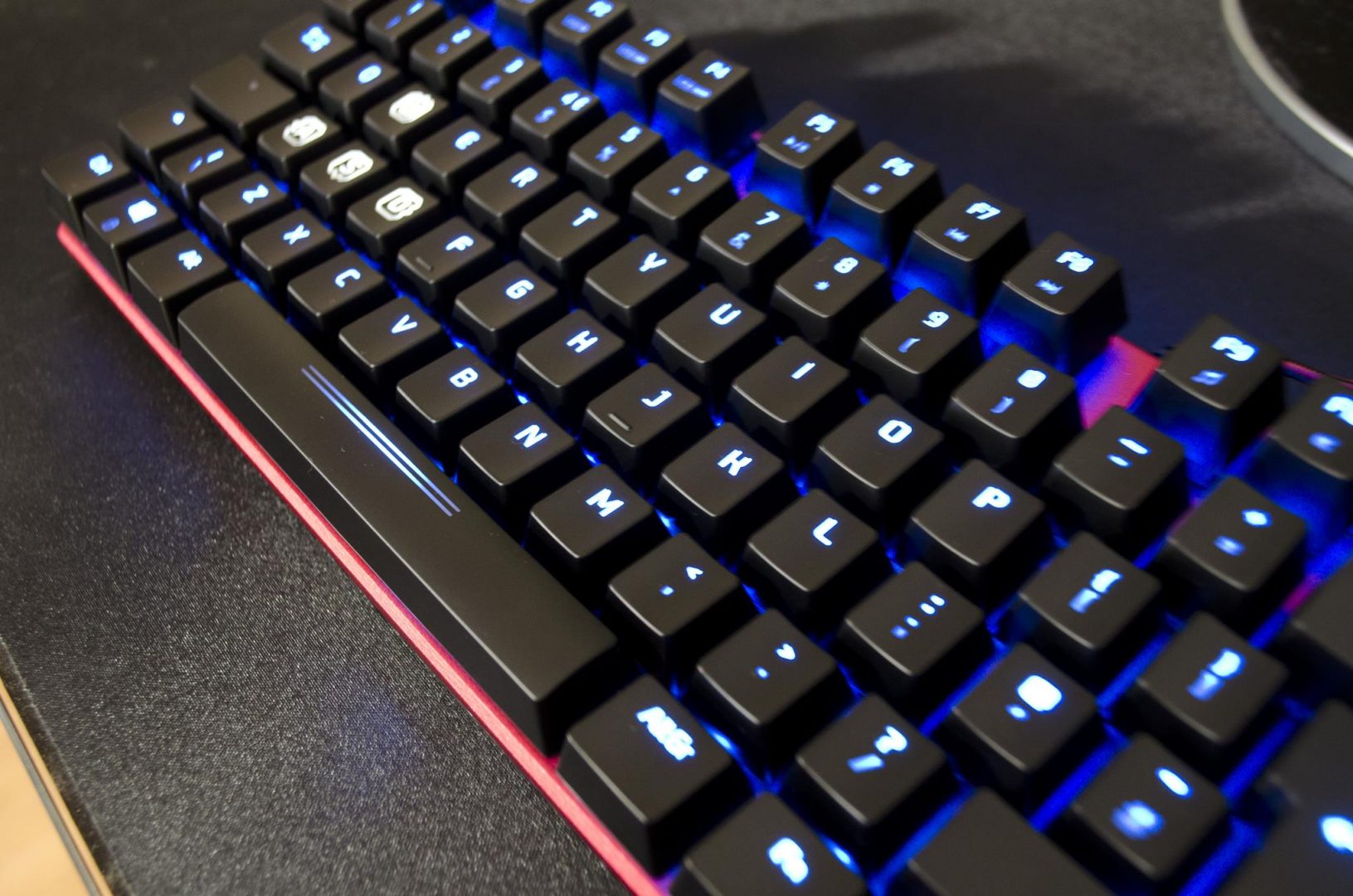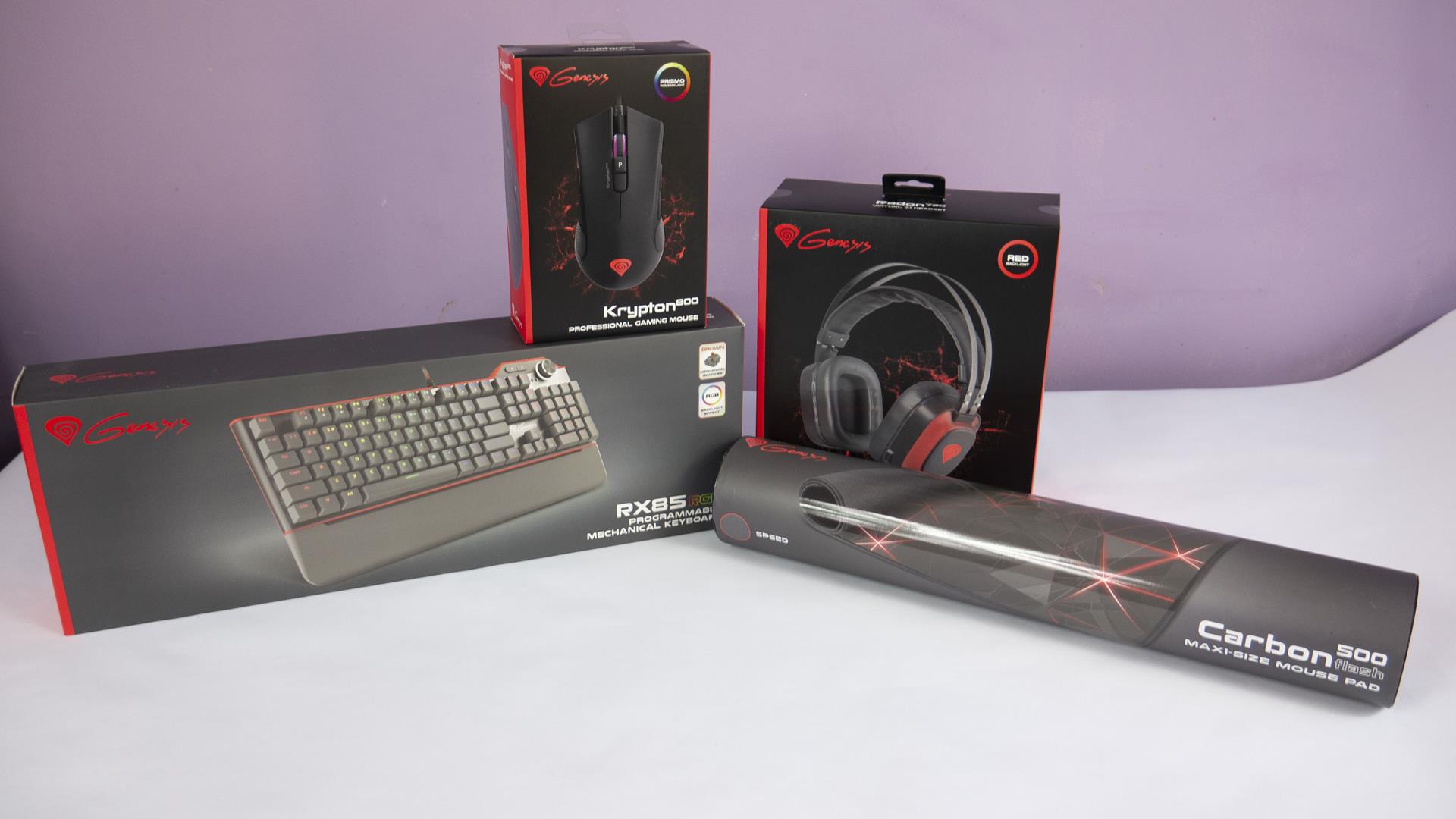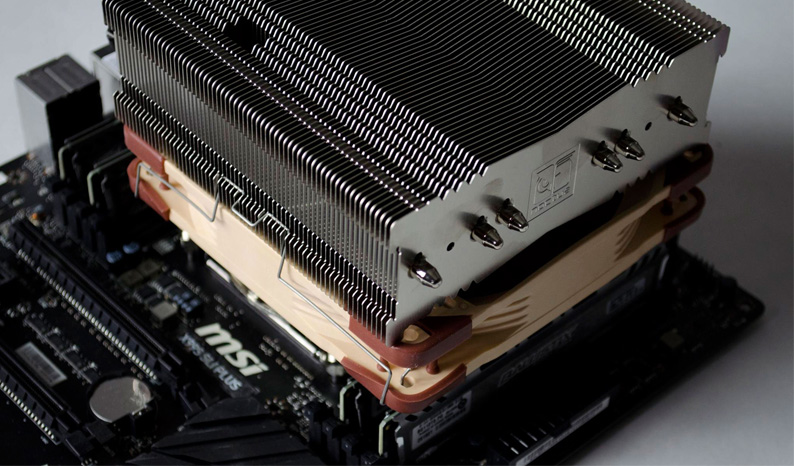
ARCTIC Freezer 50 CPU Air Cooler Review
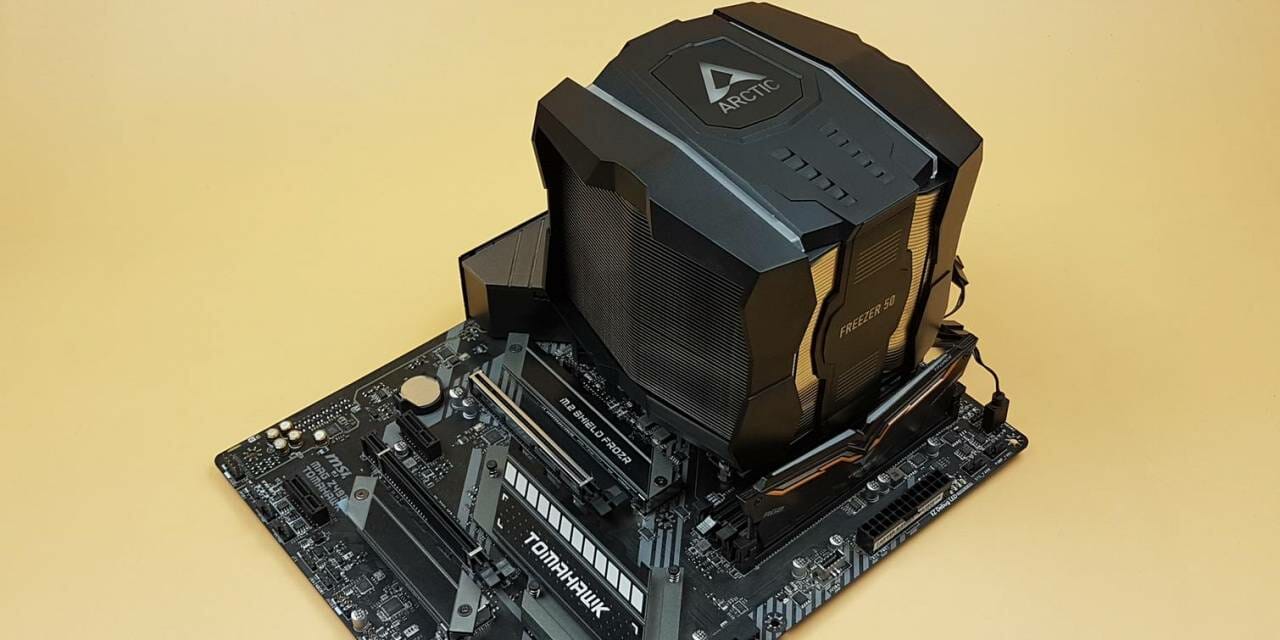
Introduction
If you know about world-famous MX-4 then you already know of ARCTIC! They started in 2001 with the name Arctic Cooling and has evolved into a much more popular and reliable cooling solution provider now known as ARCTIC. Their bases of operation are in Switzerland, Germany, Hong Kong and the USA with the availability of their products in over 45 countries. Quiet cooling without performance compromise is their motto. Their product lines include CPU Coolers, Case Fans, Thermal Pastes, Charging solutions, Audio solutions, and monitor stands to name a few.
After testing the Liquid Freezer – II 420 cooler from ARCTIC, it is time to take a spin on ARCTIC Freezer 50 air cooler. ARCTIC has released its high-end air cooler named Freezer 50. This is a dual-tower configuration coupled with two P series fans in 120mm and 140mm configuration. This reminds me of the be quiet! Dark Rock Pro 4 which has the same configuration of fans. Unlike the traditional layout or design of the air coolers, the ARCTIC Freezer 50 has a plastic frame or housing encapsulating the heatsink and the fans. While we can take off the 140mm fan from the middle, the front mounted 120mm is fixed. There are A-RGB LEDs in the central portion of the housing. This cooler comes in the following configuration:
- Freezer 50
- Freezer 50 with A-RGB controller
- Freezer 50 TR4 Edition
The cooler is compatible with Intel LGA1200/115x/20xx and AMD AM4 sockets. For TR4, you would need to buy a TR version of the Freezer 50.
Product: Freezer 50
Manufacturer: ARCTIC
Price:
| Version | US Pricing | European Pricing |
| Freezer 50 | $74.99 | €59.99 |
| Freezer 50 Incl ARGB Controller | $85.99 | €69.98 |
Prices are at the time of the review.
Specifications
Packing and Unboxing
The cooler is shipped inside a cardboard box.
We have received the basic version of the cooler i.e it does not have a dedicated A-RGB controller. ARCTIC is offering 6 years warranty for the cooler and 2 years limited warranty for the A-RGB LEDs. The cooler is compatible with:
The specifications of the ARCTIC Freezer 50 are printed in a tabular format. The height of the cooler is 166mm.
The salient features of the cooler are:
- Bundled A-RGB Controller
- Quick and Easy Installation
- Push-Pull Configuration
- Dual Tower Design
The opening side of the packing box has the ARCTIC brand name in the middle.
When the box was opened we spot a cardboard made top cover.
Removing the top cover would show a box containing the cooler.
The mounting hardware is placed on the bottom container. There is no accessory box.
The cooler is placed inside the cardboard box.
The cooler is wrapped inside a transparent container.
Contents
Let’s take a look at what is bundled with the cooler.
We have:
- 1x Metallic backplate for Intel
- 2x Mounting Brackets for Intel/AMD
We have:
- 4x Intel LGA20xx standoffs
- 4x AMD standoffs
- 4x Other socket standoffs
- 4x Thumbnuts
ARCTIC does not provide a printed manual. Instead they provide a scan label which will take the user to the product’s webpage with detailed installation steps. You would need an active internet connection for that. We have 08g of MX-4 thermal paste and 8x rubber washers provided with the accessories.
We have:
- 8x Washers
- 0.8g MX4 Thermal Paste
Closer Look
It is time to take a look at the cooler.
The cooler has a dimension of 148x150x166mm (LxWxH) where 166mm is the overall height of the cooler. The weight of the cooler is 1160gm with the fans. The ARCTIC Freezer 50 is compatible with Intel LGA1200/115x/20xx and AMD AM4 sockets. The cooler has a lack color housing which is encapsulating the heatsink and the fans. This is a large size cooler and would need more space particularly with the design element of the housing on the cooler.
The top of the cooler is concealed and there is dual A-RGB LED lining to add a subtle look and feel to the cooler. There are two backlit diffusers on the left and right side of the central portion. The portion below the ARCTIC branding has cut-to-size cutouts for ventilation. The ARCTIC branding is also backlit.
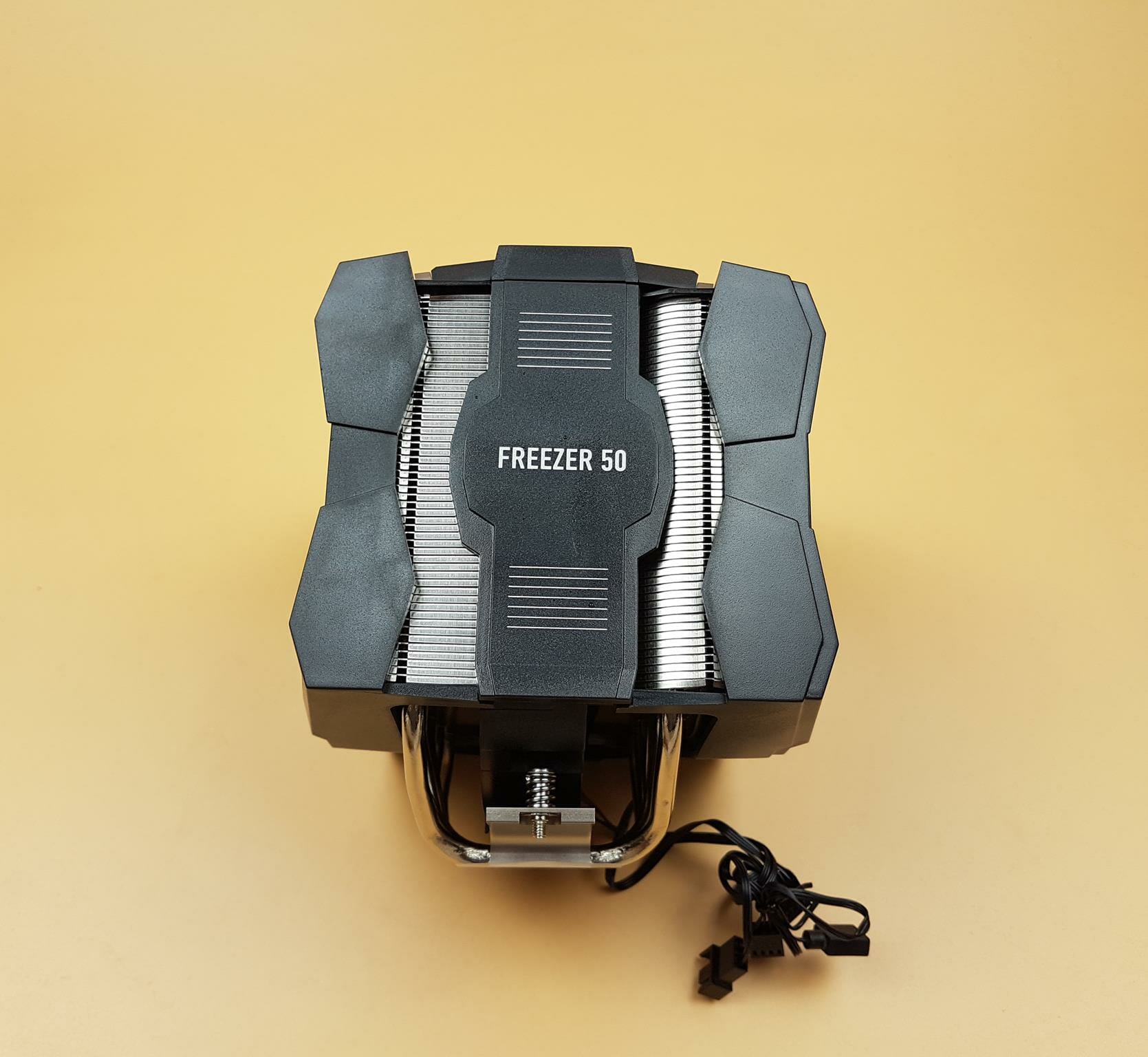
The left and right side of the housing are identical in layout. The heatsink is not fully covered on the sides. There is certain area exposed on both sides which probably for the ventilation. We can see the aluminum jointed assembly of the fins here. The central portion has an ARCTIC branding. The tip of the mid panel of the housing acts as a locker for proper sitting of the panel.
The front side of the cooler has a 120mm P series high-performance fan which is pre-installed and fixed in the housing. The housing has a stylish outlook on this side as well. The bottom side of the housing is in a triangular shape with a tip in the center. This would have consideration for the RAM clearance.
Taking a look at the rear of the cooler, we can spot curvature layout on the aluminum fins. This side is fully exposed which is understandable as the exhaust of the cooler is coming from this end. The housing here has almost the same design with the tip of the lower center could hinder the large size IO shroud on the motherboard.
There is a protective sheet on the nickel-coated base. The cables are coming out from the opening on the mid-section.
The central portion of the housing is completely removable. Pulling the bottom ends on both sides will lose its grip. Slide out the panel. This will also pull the 140mm fan as it is fixed to the frame. The 140mm fan has 5 blades.
There is a 4-arms assembly holding the motor and the blades.
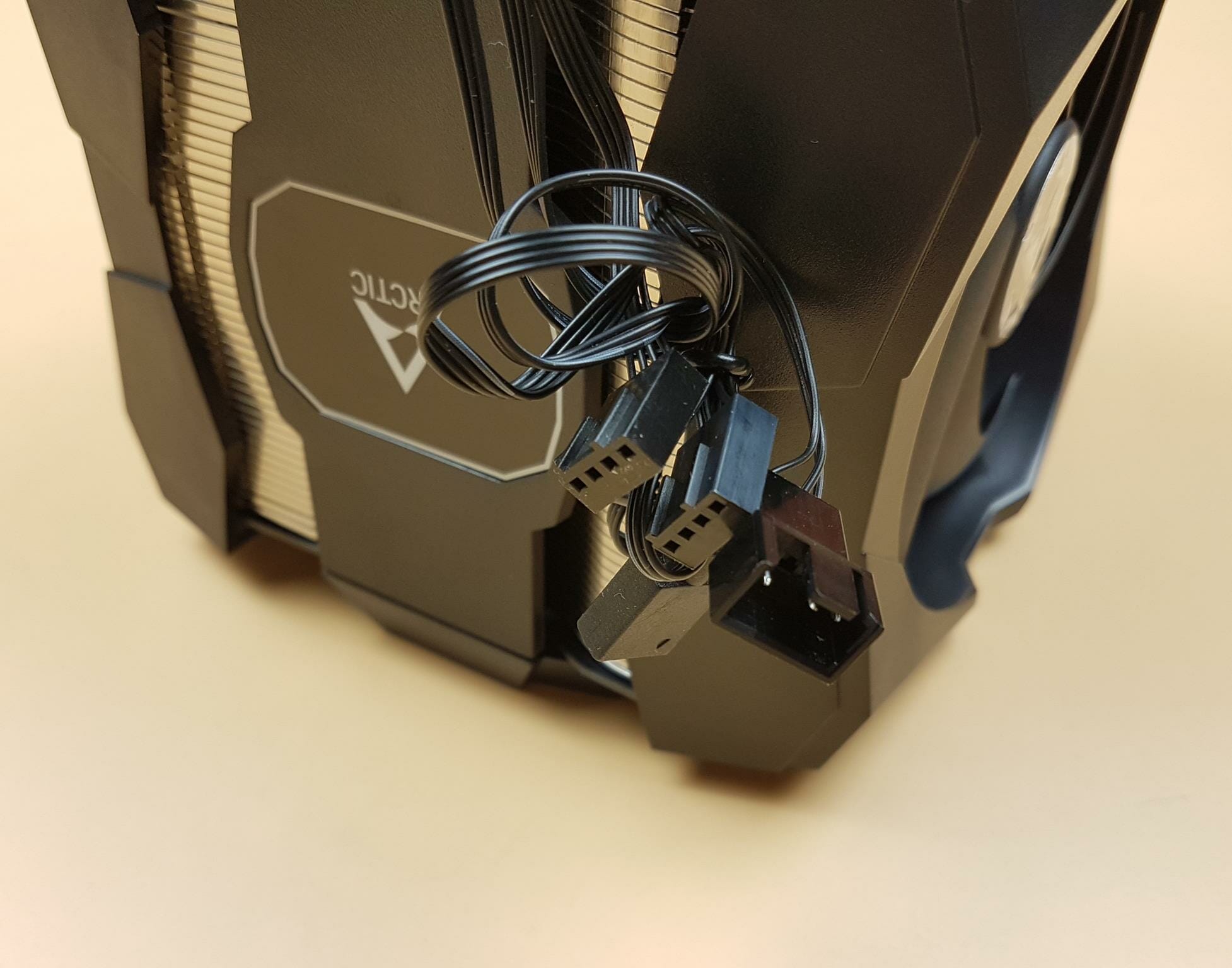
The 140mm fan has a 4-pin PWM connector as well as a 4-pin socket. The idea is simple. Connect the 4-pin PWM connector of the 120mm fan to this socket and then connect the 4-pin PWM connector of the 140mm fan to the motherboard’s 4-pin PWM header for a single control of both fans. Since both fans have different rated speeds, going this route, we will only get to know the speed of the 140mm fan. The cable has a length of approximately 210+82mm.
There is a standard 3-pin (5V) A-RGB cable as well. The good point is that we can simply connect this cable to the A-RGB header on the motherboard and sync & control the lighting on the cooler with the motherboard using the motherboard’s software. This cable has an approximate length of 348mm.
There are 13 A-RGB LEDs installed on the ARCTIC Freezer 50 cooler.
Taking a peek at the top, there are 6 copper heat pipes terminating in an alternate fashion on the top on both towers. There is no color coating on the fin stack. The front side of the both towers have V-shape notches which help reduce the resistance to the airflow and the noise. The backside of the front tower has plain layout unlike the backside layout of the rear tower.
The ARCTIC Freezer 50 has 52 aluminum fins per tower making a total of 104 fins. The fins are jointed form the sides.
The above picture shows the close up view of the front side of the rear tower. We can spot the V shape notches all over here.
The above picture shows the backside of the front tower having a plain layout of the fins.
Here is the close up view of the front side. The 120mm fan is pre-installed and fixed to the frame. It has 5 black color blades and a circular frame.
The above picture shows the displacement of the nickel plated copper heat pipes inside the tower.
The ARCTIC Freezer 50 packs 6 nickel plated copper heat pipes each having a 6mm thickness.
The mounting plate is pre-installed on the base and has a spring-loaded screw on each side.
The ARCTIC Freezer 50 is following a continuous direct contact technology. In CDC the heat pipes make direct contact with the heat source. The heat pipes are completely in nickel-coating. We have seen many coolers with CDC where the exposed portion of the heat pipes making contact with CPU is in pure copper. The finishing on the base is not a mirror one. The base area roughly measures 40x36mm.
The Freezer 50 features two P-fans working in a push-pull configuration. Combining a 120 mm and a 140 mm fan leads to an increase in airflow for improved cooling while keeping the noise level and the installation height down.
Salient features of the P series fans are:
- Broad RPM range
- Lower power consumption
- Less vibrations
- Extended life span
- High-quality bearing
- PWM for synchronous fan control
- High static pressure for increased cooling performance
Here are the specifications of the Fan:
| 120mm | 140mm | |
| Speed | 200 ~ 1800 RPM | 200~1700 RPM |
| Noise Level | 0.4 Sone | 0.4 Sone |
| Current | 0.09A | 0.13A |
| Rated Voltage | 12VDC | 12VDC |
| Bearing | Fluid Dynamic Bearing | Fluid Dynamic Bearing |
| Connector | 4-pin PWM | 4-pin PWM + 4-pin socket |
Installation
We have recently upgraded our Intel testbed and are now on the Intel LGA1200 socket. Installation is as follow:
Place the pasting washers on the mounting holes around socket area of the motherboard’s backside. Place the backplate.
Place the pasting washers on the mounting holes around the socket area on the front side of the motherboard. Secure the backplate using the standoffs.
Place the mounting brackets on the standoffs.
Secure the mounting brackets/clips using the thumb nuts/screws.
Apply thermal paste on the CPU. Remove the mid panel of the housing from the cooler. Place the cooler on the CPU by aligning the spring-loaded screws with the standoffs on the mounting brackets/clips. Tighten the spring-loaded screws in an alternate manner with even pressure for optimal installation and even pressure on the CPU surface.
Put the mid panel back on the heatsink.
Connect the 4-pin WPM fan cable to the 4-pin PWM header on the motherboard and connect the 3-pin A-RGB cable to the 5V header on the motherboard. This would complete the installation.
Clearance
The height of the cooler is 166mm. Keep this in mind while planning your build with respect to the PC Chassis as the chassis should have support for CPU cooler’s height of minimum 167mm or so.
The cooler has a RAM clearance of only 31.7mm. Unfortunately, we can’t adjust the height of the front fan to make room. Fan is not an issue here but the tip of the underside frame. The RAM with inset in the center can be installed with this cooler. We had to remove the second RAM stick and used only a single T-Force NightHawk RGB stick.
The cooler does not block the first PCIe slot.
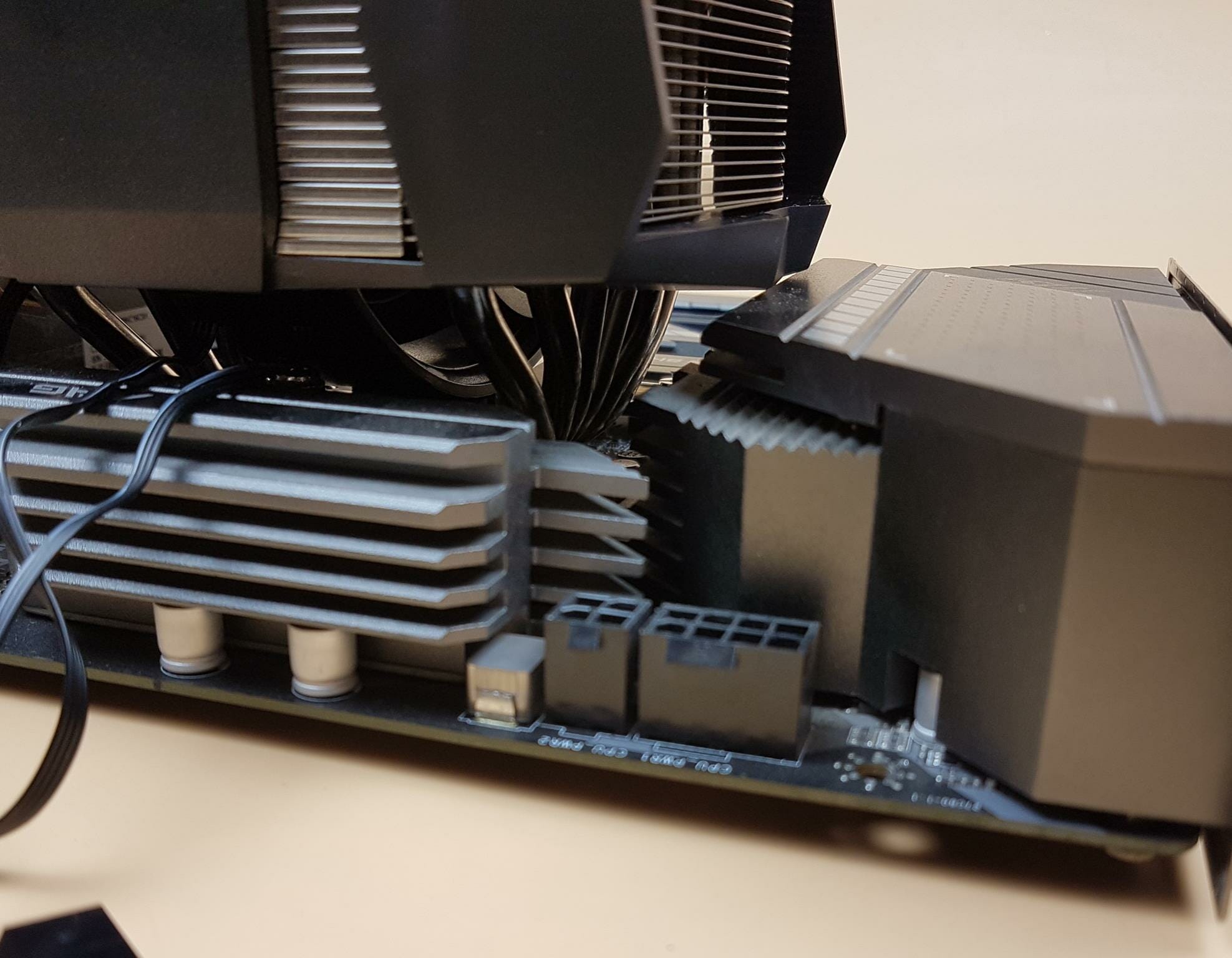
We ran into an issue where the tip of the frame on the backside of the cooler touched the IO shroud of the motherboard (MSI MAG Z490 TOMAHAWK). We were unable to properly install the cooler in a standard layout in which air flows from DIMM slots to the CPU socket.
We ended up installing the cooler in the vertical layout. The reason we chose to have the air flowing down is that we wanted to eliminate the graphics card heat source as the cooler is now facing the graphics card which could Impact the thermal performance.
There is no issue with respect to the clearance of top area of motherboard.
A-RGB Lighting
The 13 A-RGB LEDs installed in the Freezer 50 are autonomously controllable. The Freezer 50 is compatible with the common A-RGB standards of leading motherboard manufacturers. Here are a few pictures:
Testing
We have upgraded our Intel testbed recently. Following test bench is used: (Links are affiliate links)
- Intel i7 10700k
- MSI MAG Z490 TOMAHWAK
- T-Force NightHawk RGB 16GB @ 3200MHz
- Nvidia GeForce GTX 1080 FE
- addlink S70 256GB NVMe SSD
- bequiet! Straight Power 11 850W Platinum PSU
- Open-air test bench
Here is the settings table for testing:
| Clock (MHz) | 3800 All Cores |
| Voltage (V) | 1.025 |
| Clock (MHz) | 4700 All Cores |
| Voltage (V) | 1.255 |
| Clock (MHz) | 5100 All Cores |
| Voltage (V) | 1.345 |
| Turbo Boost | Disabled |
| C-States | Disabled |
| Speed Step | Disabled |
| Thermal Paste | Noctua NT-H1 |
| Thermal Paste Application | Dot Method in the center. |
| Test Run Time | 30 minutes |
| Idling Time | 10 minutes |
| Fan Speed | 100% PWM Duty Cycle and Auto PWM |
| Pump Speed | Connected to the AIO Pump header to run at 100% speed |
| Header | CPU_Fan header for the fans and Pump_Header for the pump |
| Software | AIDA64 6.3 Extreme [FPU] |
We are using Noctua NT-H1 thermal paste for coolers testing. Using a same thermal paste for all coolers would ensure the standardization. Delta temperatures are reported on the graphs. The testing is done on an open air bench system. Once inside the chassis, the temperatures are expected to rise and would largely depend upon the optimal airflow inside the chassis.
Not every run of the stress test may yield the same result. This could well be due to many factors like mounting pressure, thermal paste application, varying ambient temperature. Not to mention the silicon differences even among the same category of the chips. Hence, it is pertinent to mention the testing methodology along with the specifics.
The coolers are also tested using Auto PWM function. MSI is using Smart Fan mode in the UEFI/BIOS which is not pure Auto PWM but it is what is available to us. The above picture shows the MSI default fan curve for the Smart Fan mode. Since all the coolers will be tested using the same configuration and settings, same margin of error applies to all.
Let’s take a look at the results.
3.8GHz All Cores
4.7GHz All Cores
4.7GHz All Cores [Auto PWM]
Fans’ Speed on Auto PWM
The above graph shows the maximum speed attained by the fans on the Auto PWM. For comparison, we have included the rated speed of the fans to have reference in determining the Auto PWM range.
5.1GHz All Cores
Noise
The sound meter was showing the noise level to be 49~50 dB(A) with ambient sound level of 33 dB(A).
Conclusion
The ARCTIC Freezer 50 is the high-end air cooling solution from the manufacturer competing against the might of premium cooling solution from various manufacturers in this category. The Freezer 50 is a dual-tower configuration combined with a P12 and P14 fans. This cooler is available in three variations:
- Freezer 50
- Freezer 50 with A-RGB controller
- Freezer 50 TR4 Edition
The ARCTIC Freezer 50 is compatible with Intel LGA1200/115x/20xx and AMD AM4 sockets. We have a large size cooler which would need more space. This large size is also contributed by the housing around the cooler.
The cooler has an eloquent design using a stylish housing covering the heatsink and the fans, giving an encapsulated outlook with some stunning A-RGB lighting on the top. This is a large size cooler having a dimension of 148x150x166mm (LxWxH). The height of the cooler is 166mm.
Each tower has 52 aluminum fins and using asymmetrical design. Each fin has 0.4mm thickness. One side of the tower has V-shape notches for reduction in resistance to the airflow and noise. The other side has a plain layout. The rear tower has a curved layout on the backside. We have a total of 6x nckel-plated copper heat pipes. The thickness of each pipe is 6mm. The ARCTIC Freezer 50 is using the continuous direct contact method on the base. The nickel pated copper hat pipes are making direct contact with the CPU. The base of the cooler roughly measures 40x36mm. The mounting plate is pre-installed on the base and it has a spring-loaded screw on each side.
There is a 120mm P series fan on the front which is not removable nor height-adjustable due to closing nature of the housing. The 140mm fan sits in the middle and its frame is attached to the middle portion of the housing. The middle portion of the frame is removable which would also take the 140mm fan out. This needs to be done anyway to install the cooler. However, I have found that placing the panel back on is not convenient and if the panel is not fully flushed then the central fan would make a whining noise which is quite loud. In my opinion, ARCTIC should consider some alternative design for easy placement of the central panel. These fans are using Fluid Dynamic Bearing. The airflow and air pressure ratings are not provided in the spec sheet.
The lighting on the cooler is compatible with all leading motherboard manufacturers. ARCTIC has provided mounting hardware which makes the installation easy and convenient. They have also provided 0.8g MX-4 thermal paste with the cooler. We have to deal with 19 mounting pieces to prepare the socket for the cooler’s installation. I have no complain in the overall mounting hardware as such but personally I don’t prefer pasting anything on the motherboard. Here we have the 8x washers which are to be placed and pasted on the mounting holes (both sides). May be ARCTIC would consider an alternate approach. One would need to check the clearance of the cooler with respect to the PC case (height), motherboard (IO Shroud could hinder the cooler), and RAM. This cooler has limited RAM clearance. By design the front mounted 120mm fan should have a better clearance. Fan here is not the issue but the tip of the housing and its bottom layout is restrictive. I am hoping that ARCTIC would improve the design further in the coming time addressing these shortfalls of otherwise a potent cooling solution.
The ARCTIC FREEZER 50 is listed at US $74.99/€59.99 at the time of the review for the edition without A-RGB controller. The ARCTIC Freezer 50 has a solid performance in this price point which makes it a compelling option for a high end air cooler and the provision of A-RGB lighting and 6 years warranty augments it well. The only caveat is the limited RAM clearance. The cooler comes recommended by us.
We are thankful to ARCTIC for provision of Freezer 50 for the testing.










